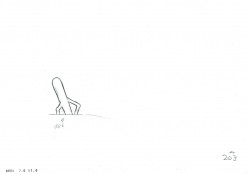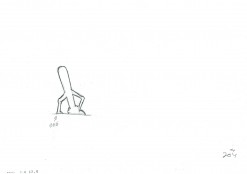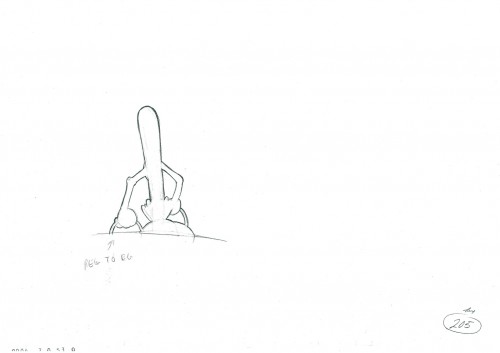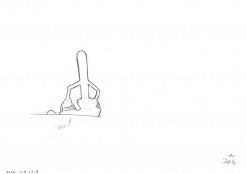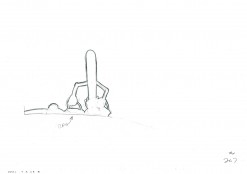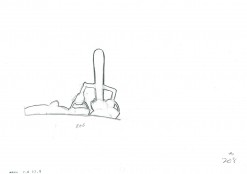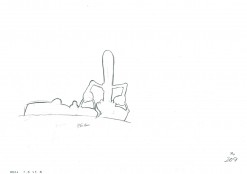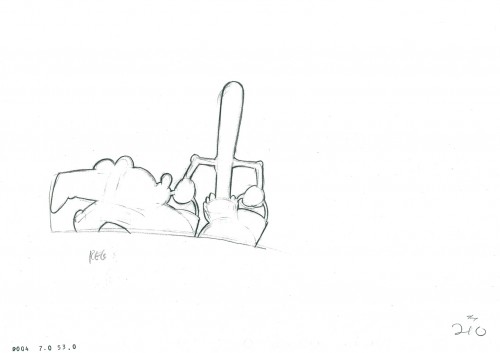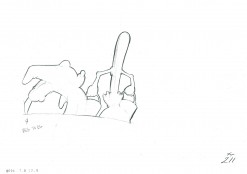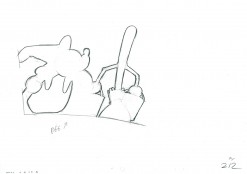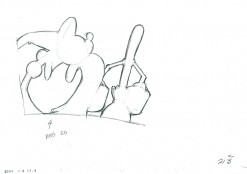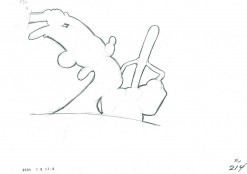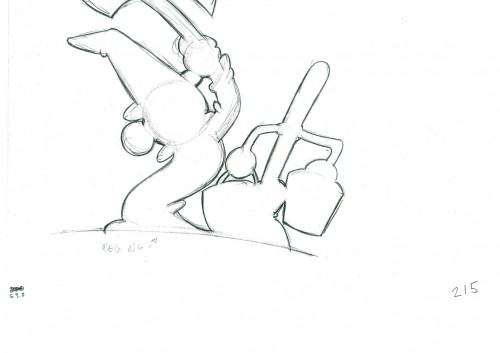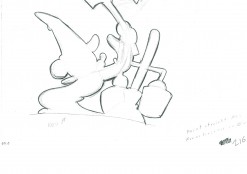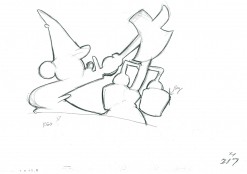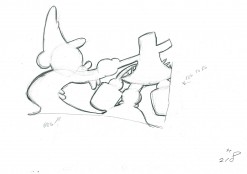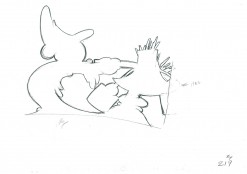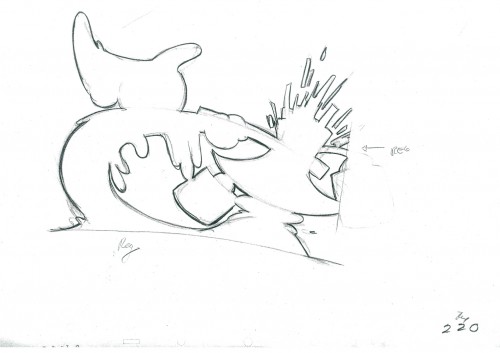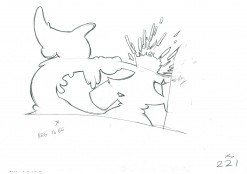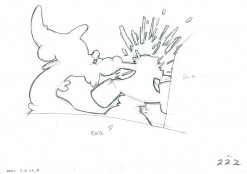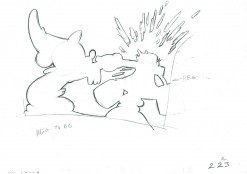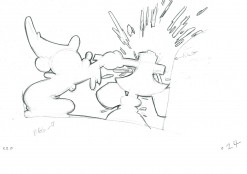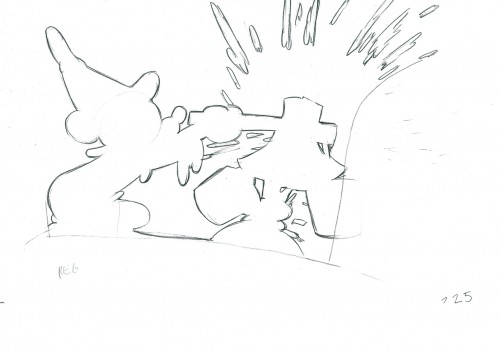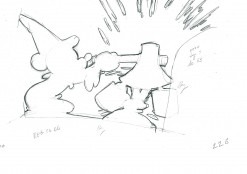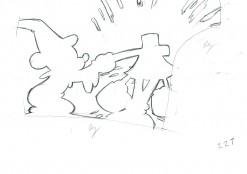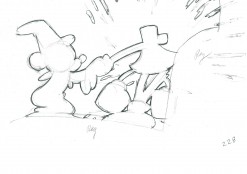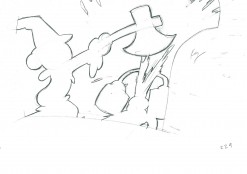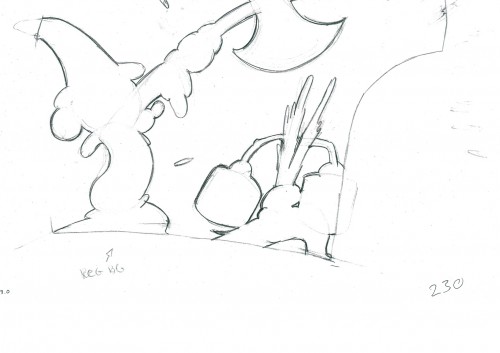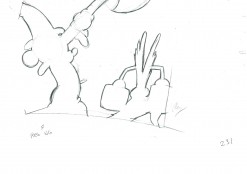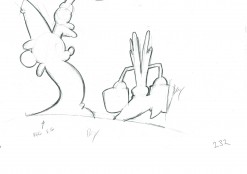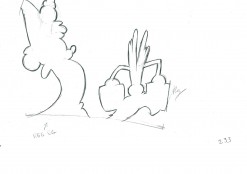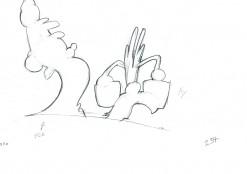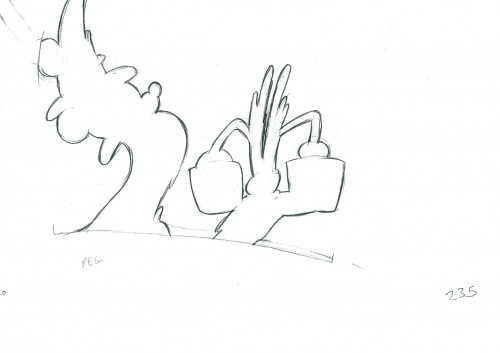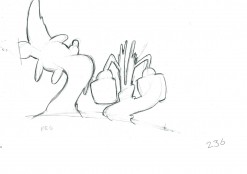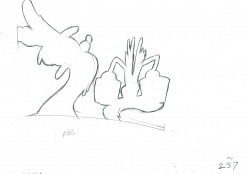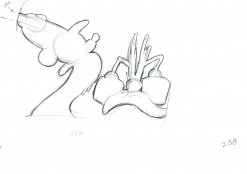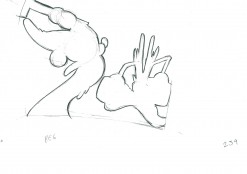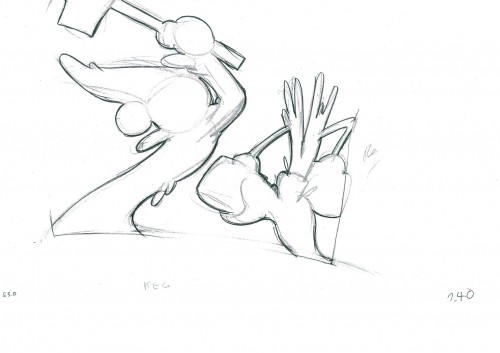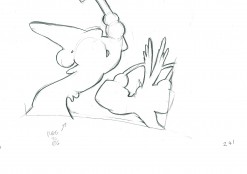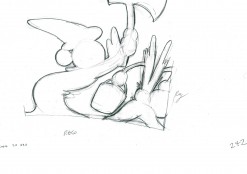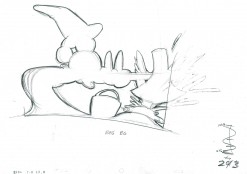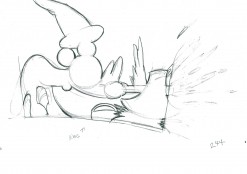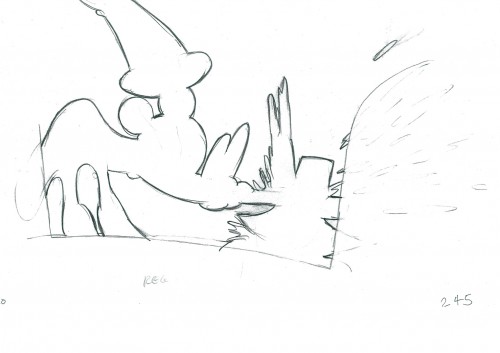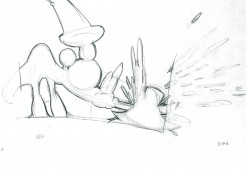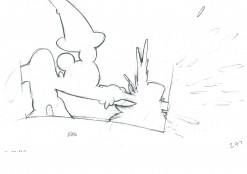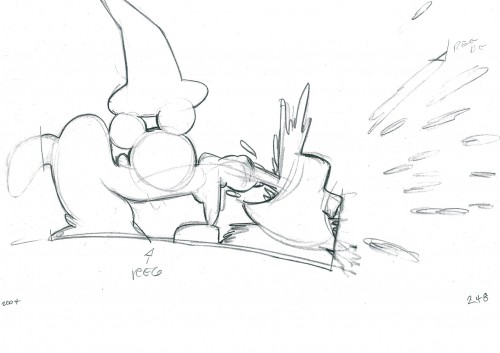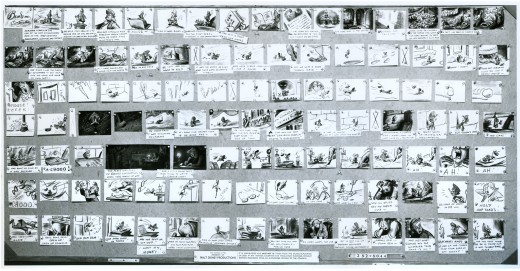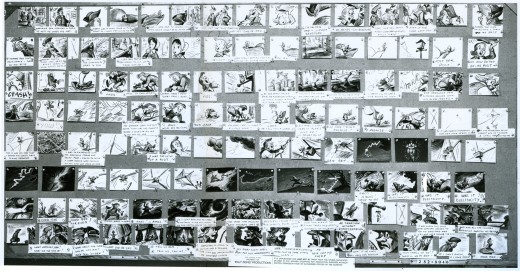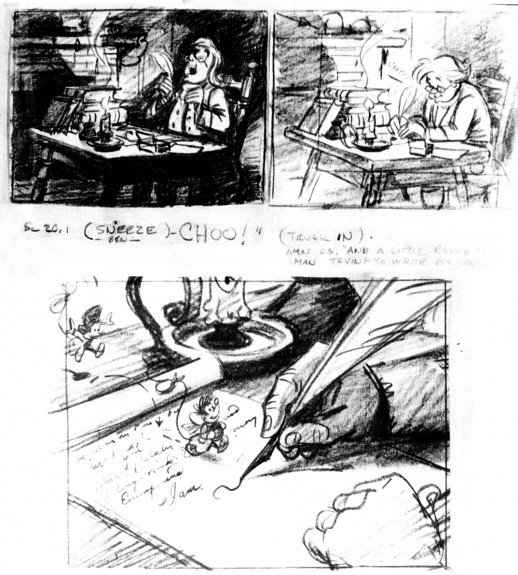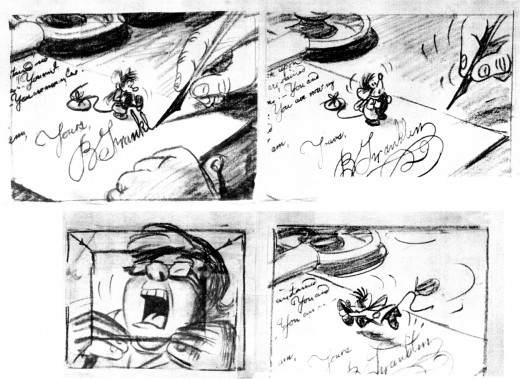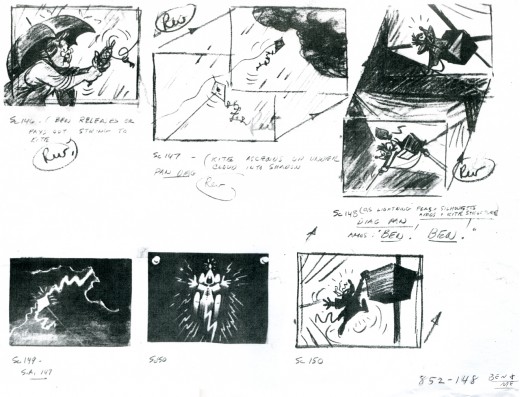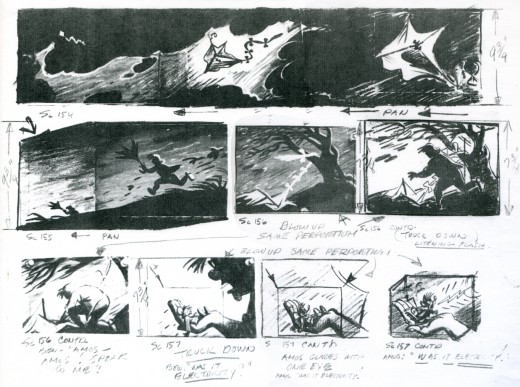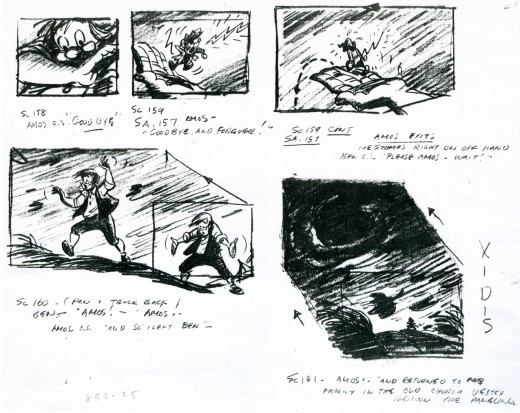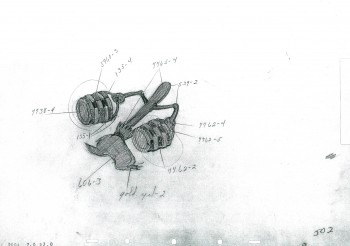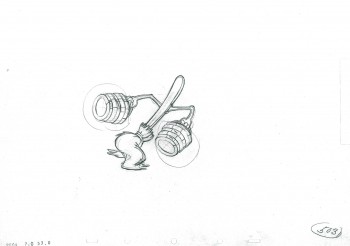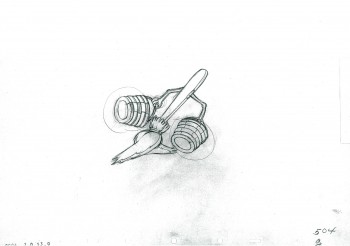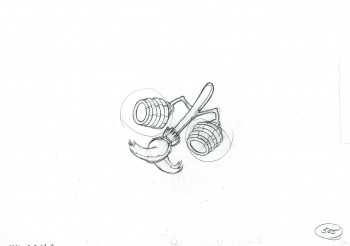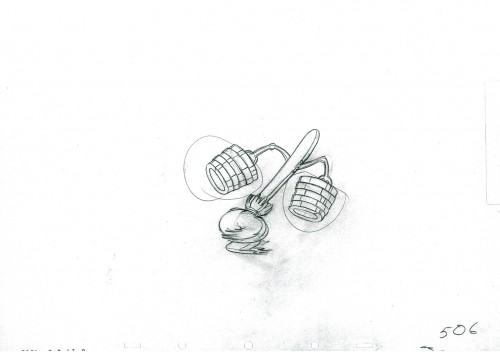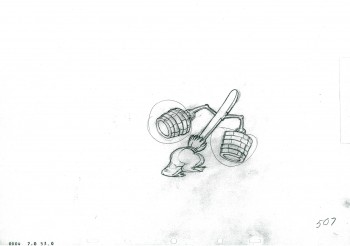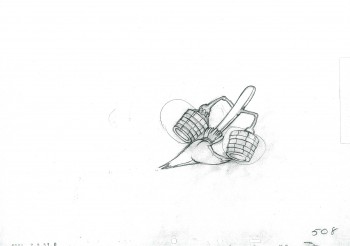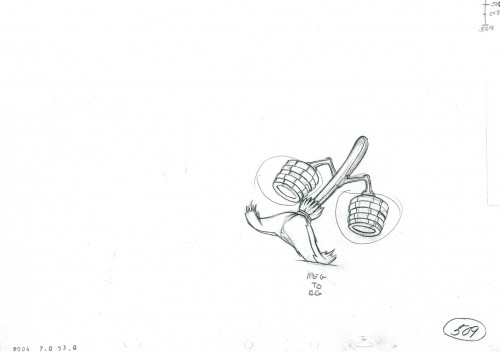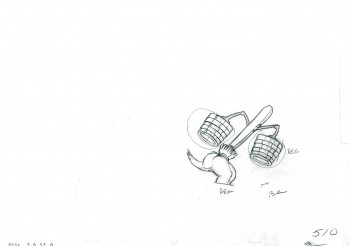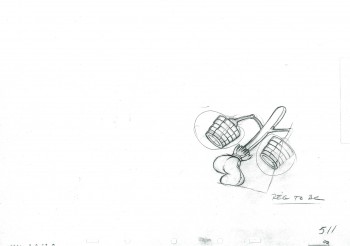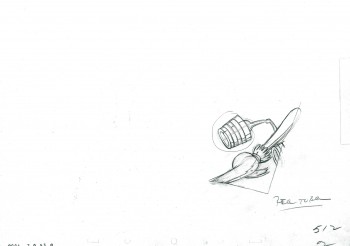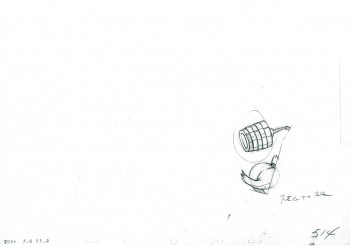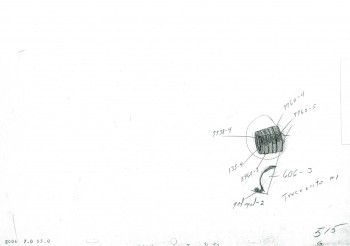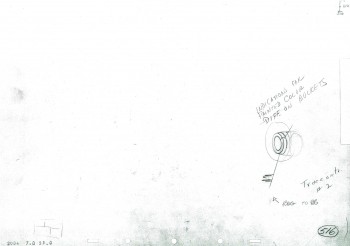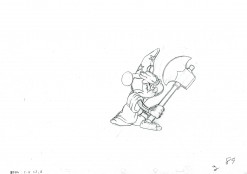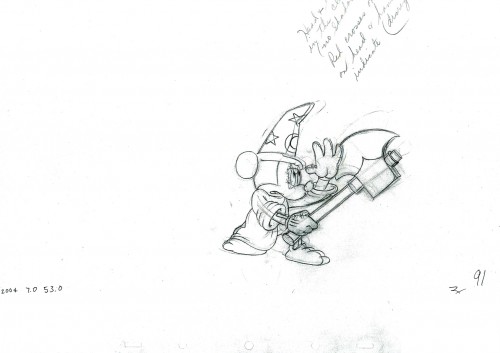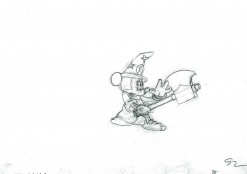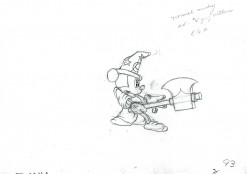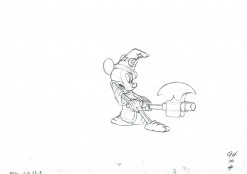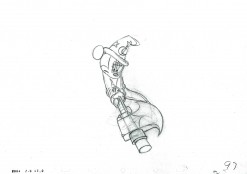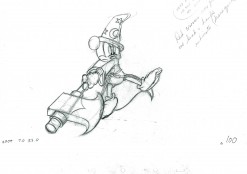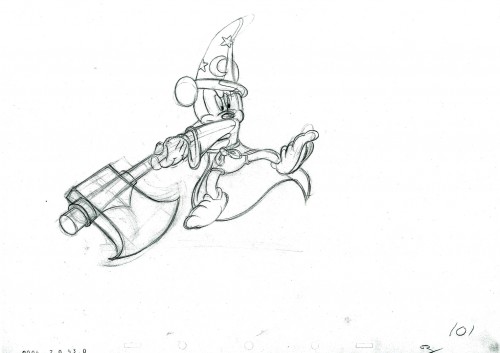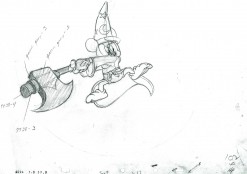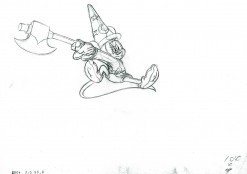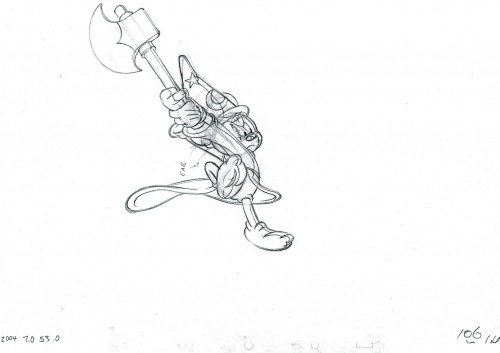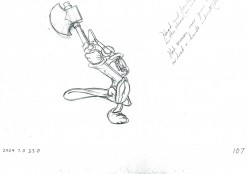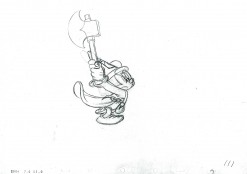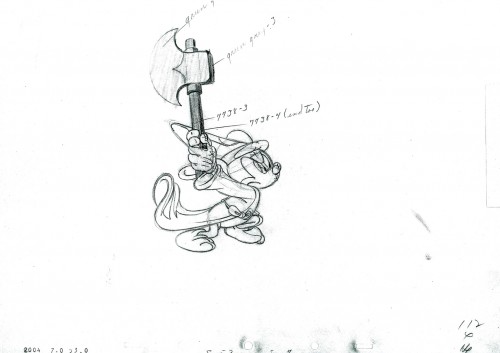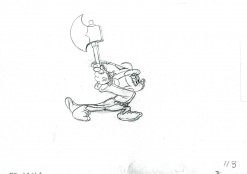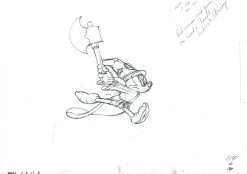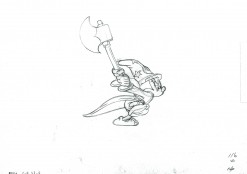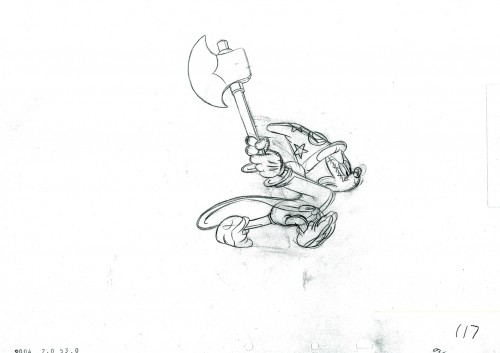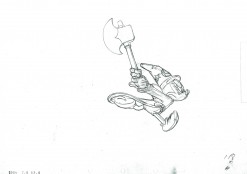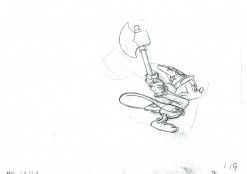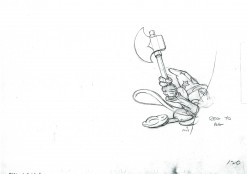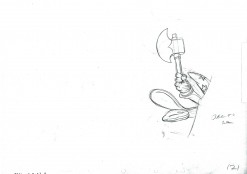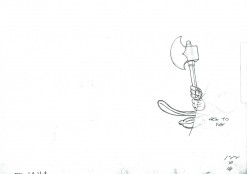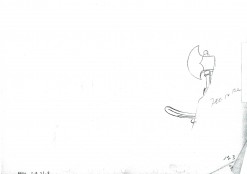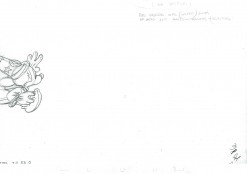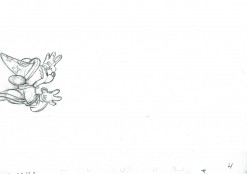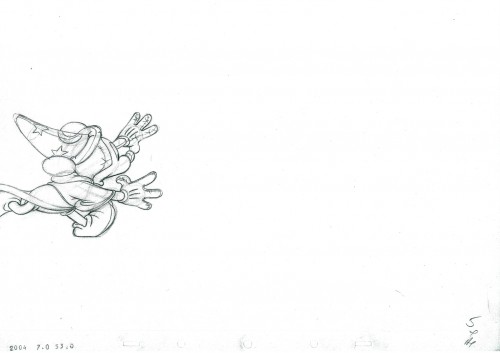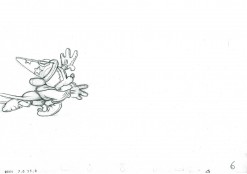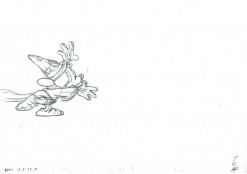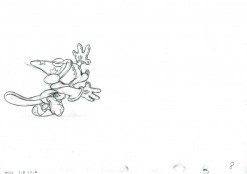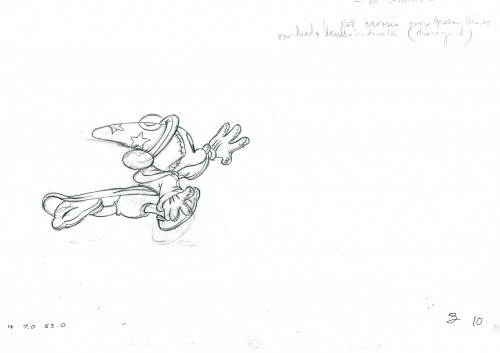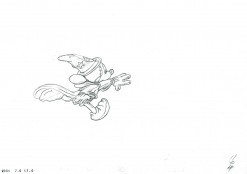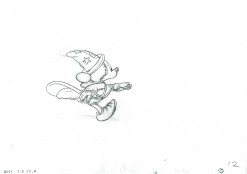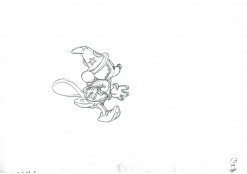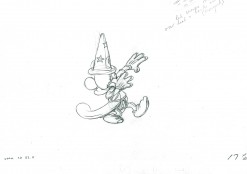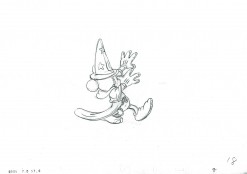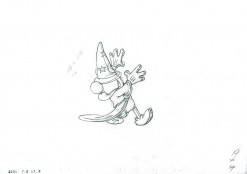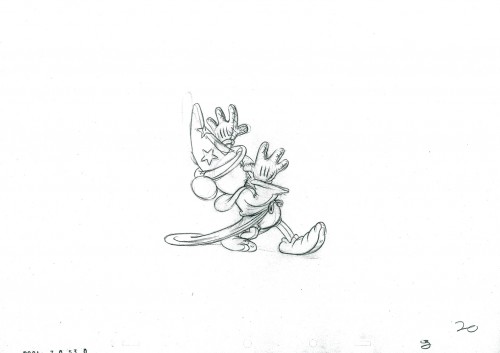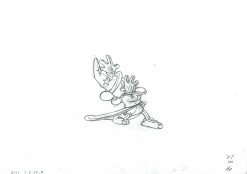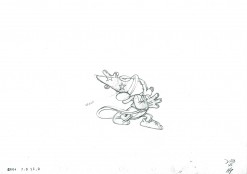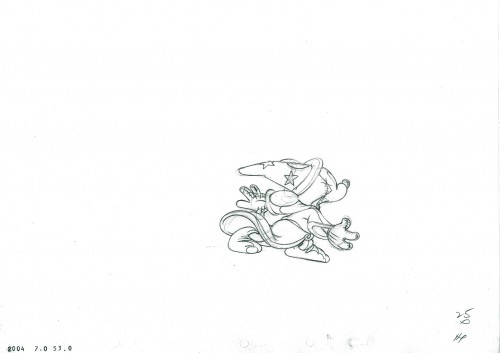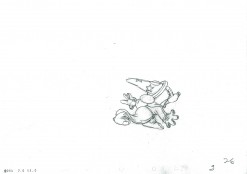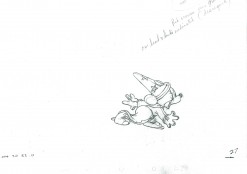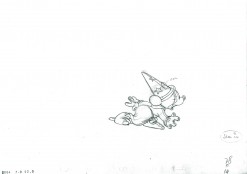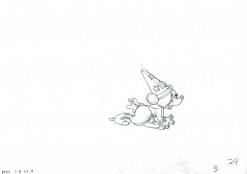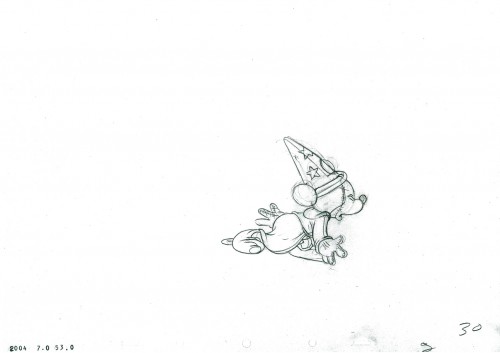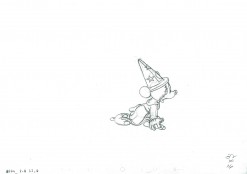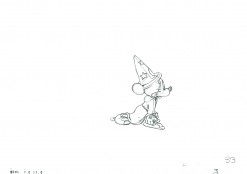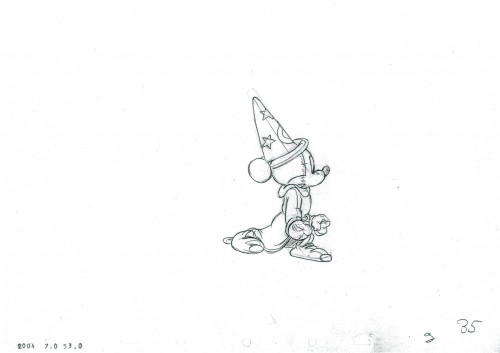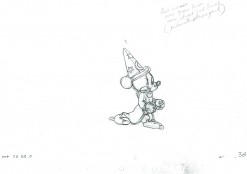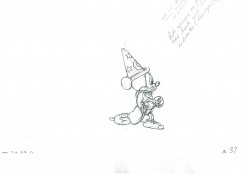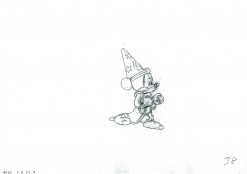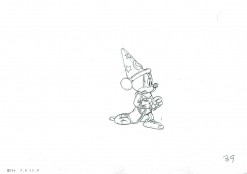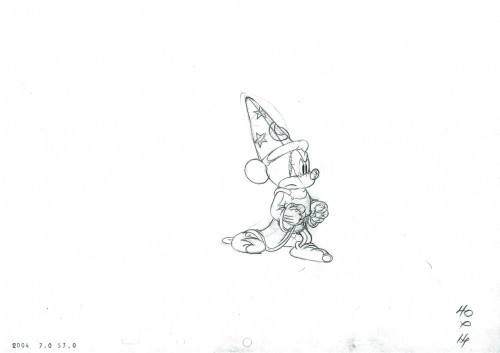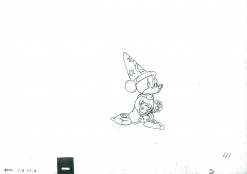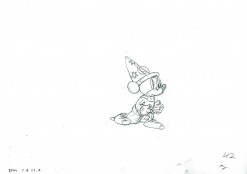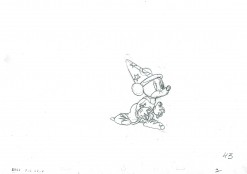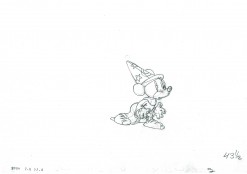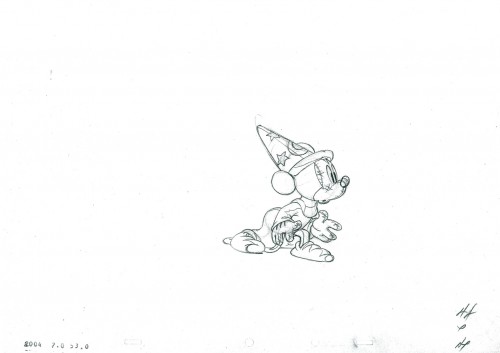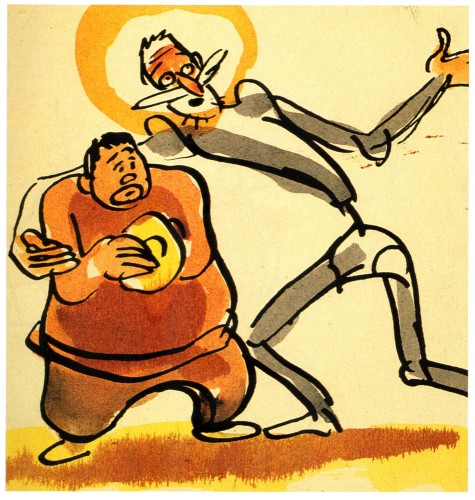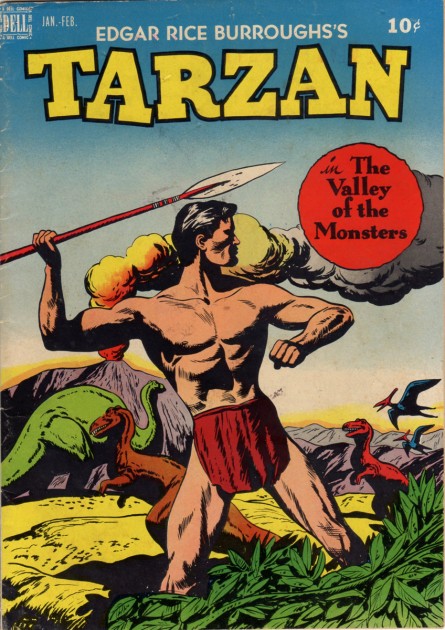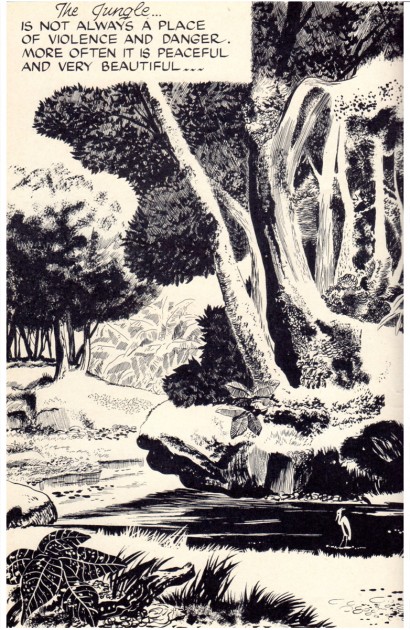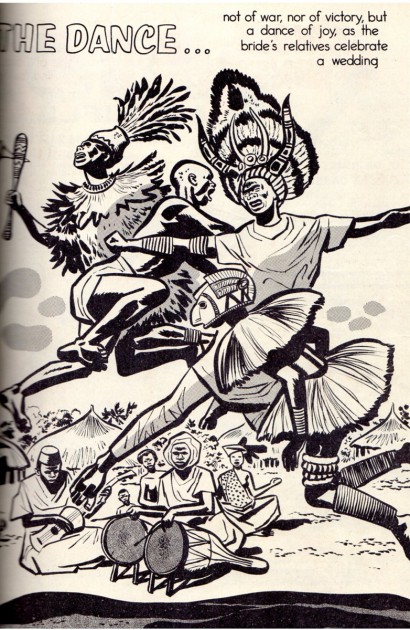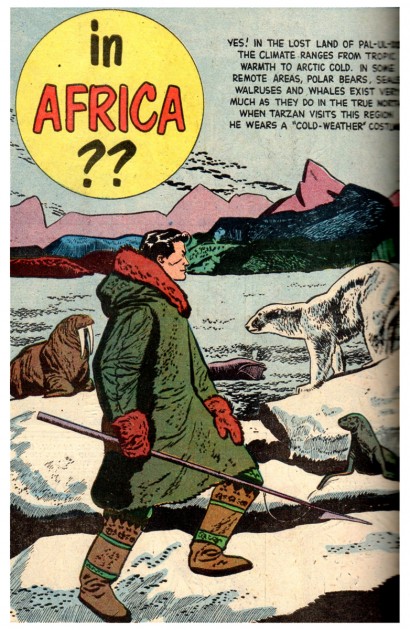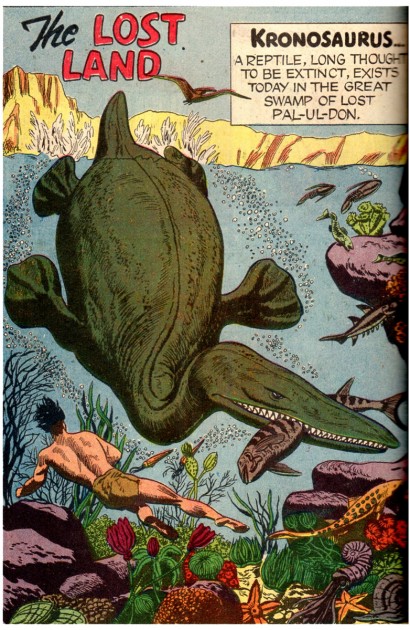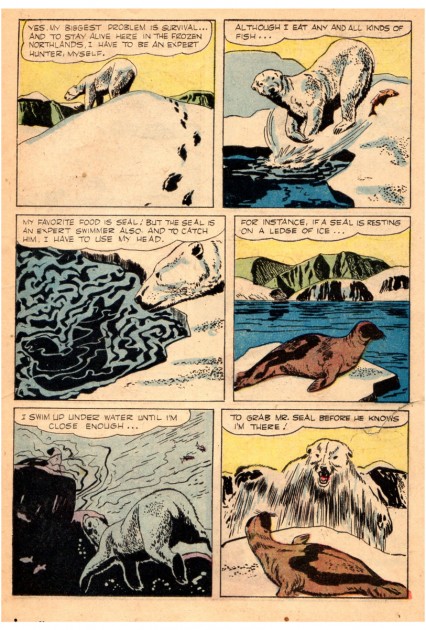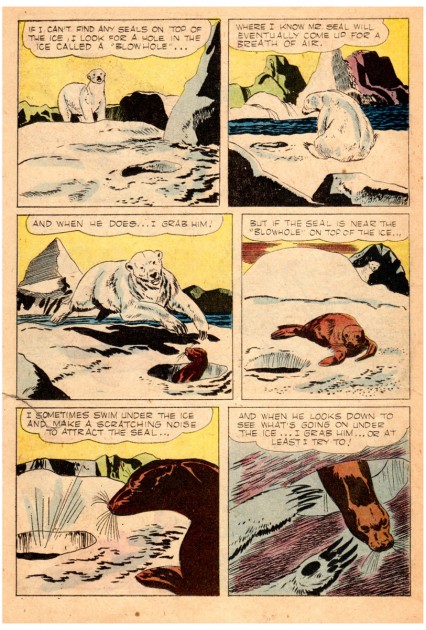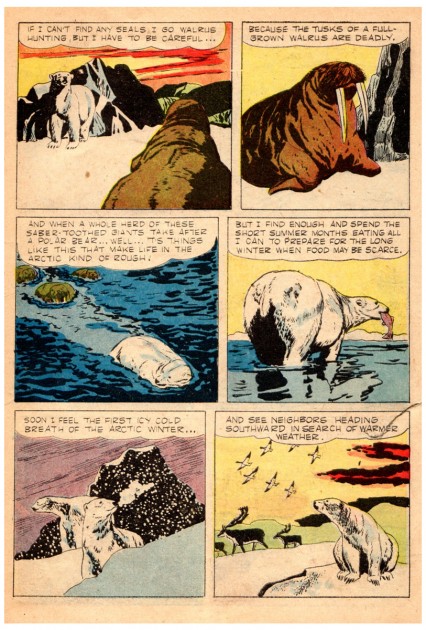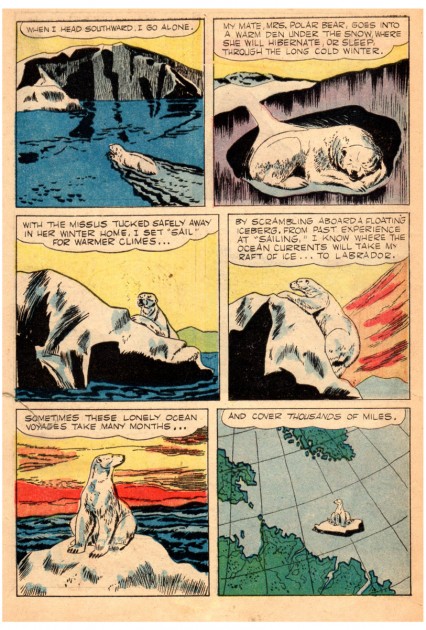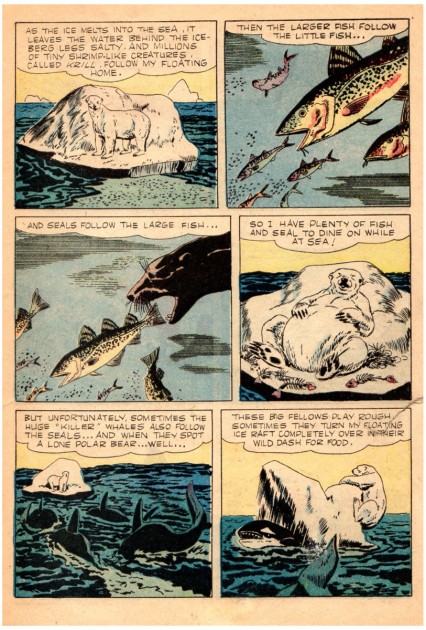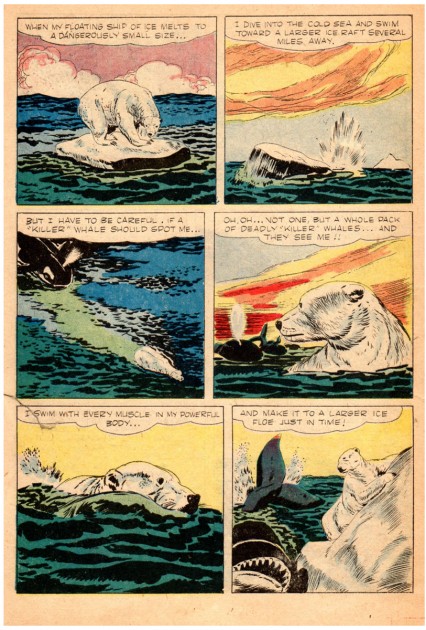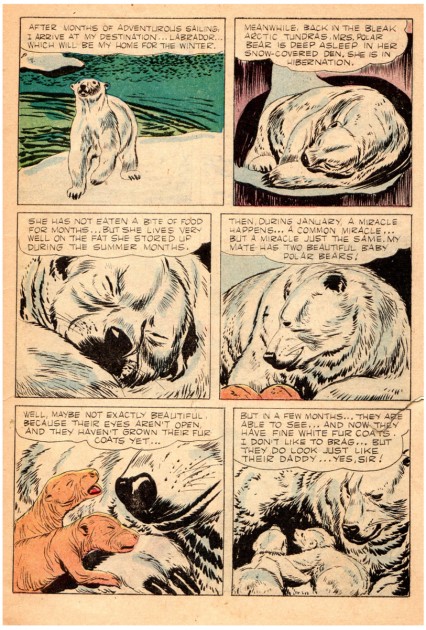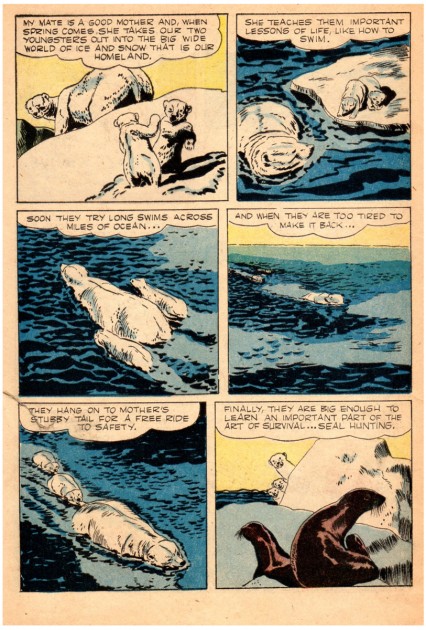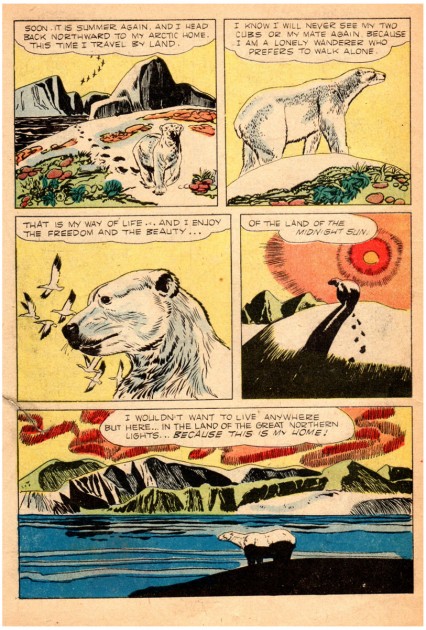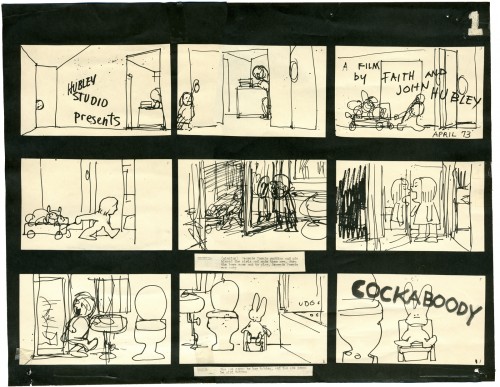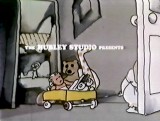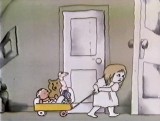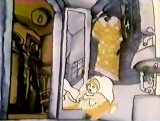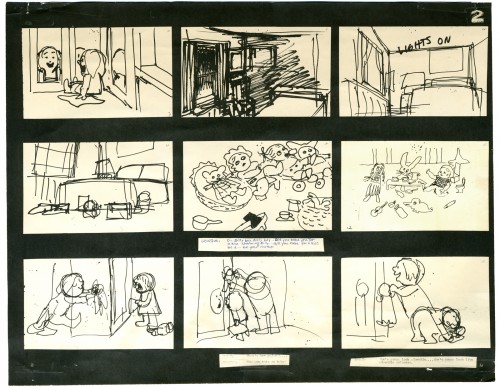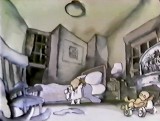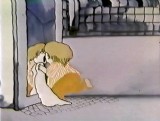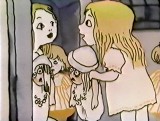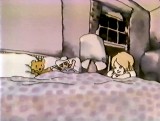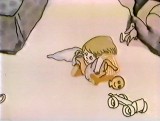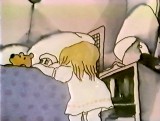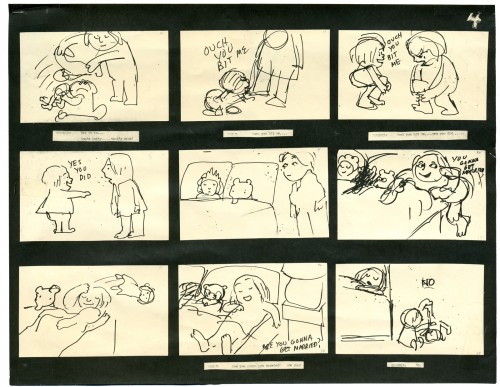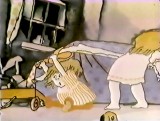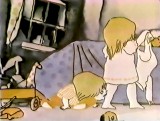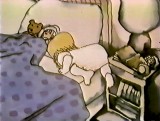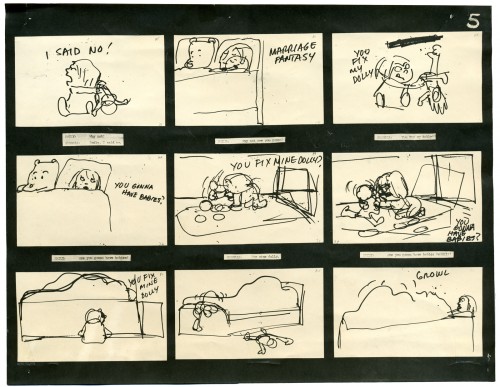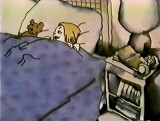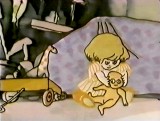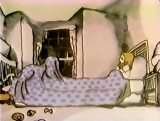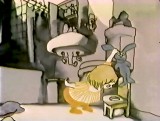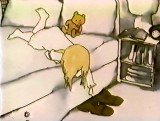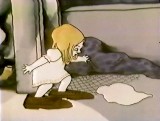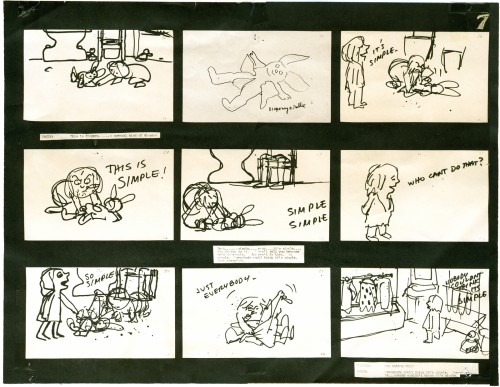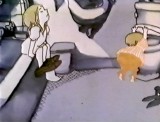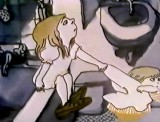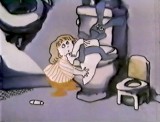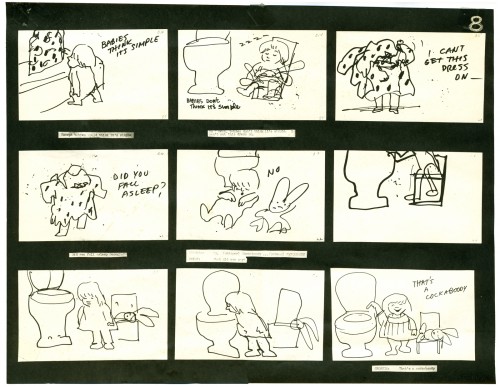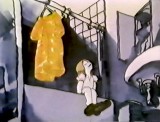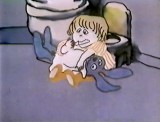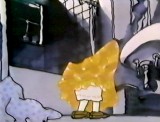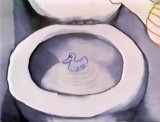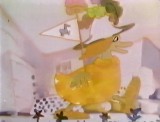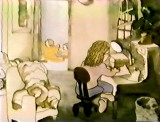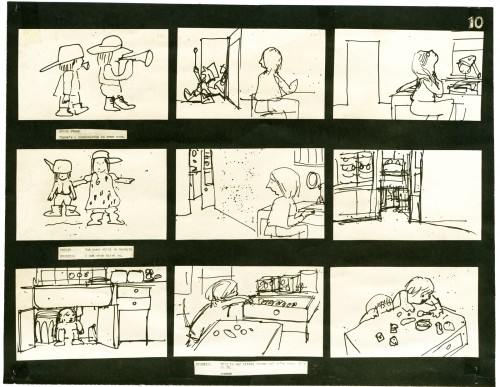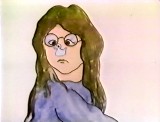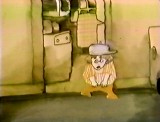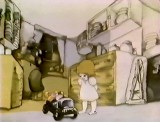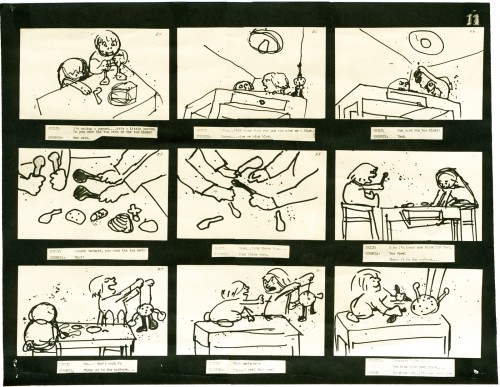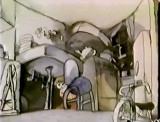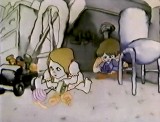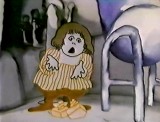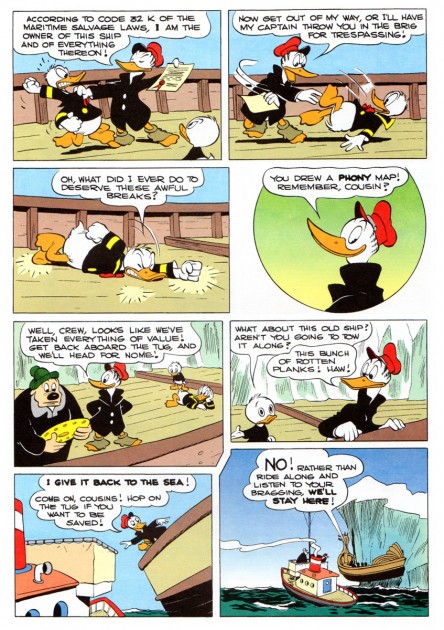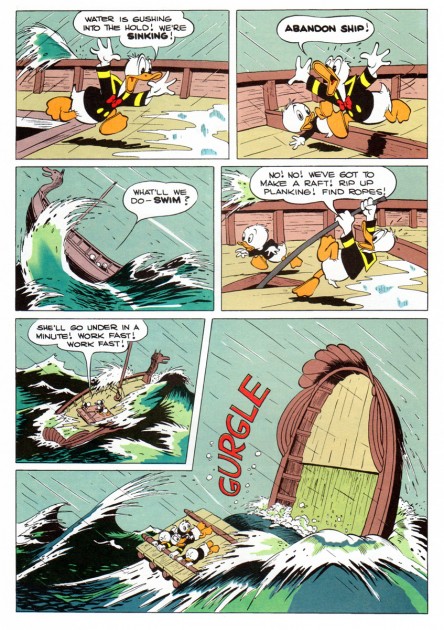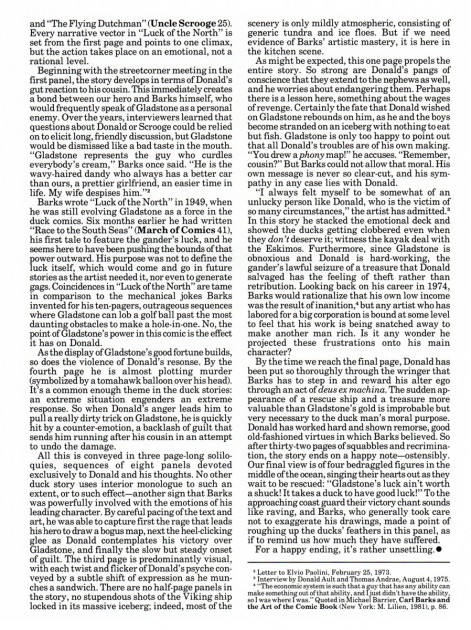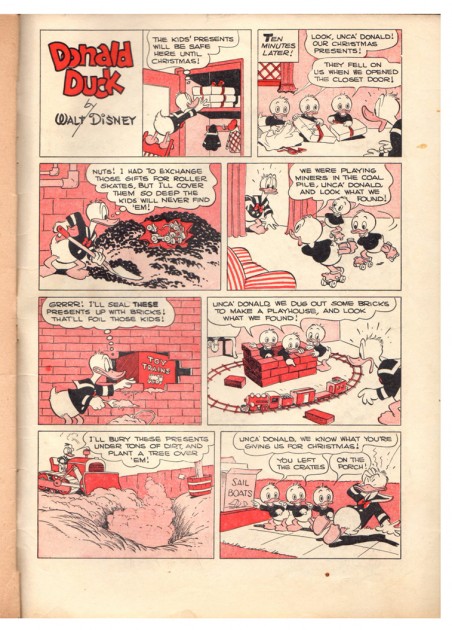Category ArchiveDisney
Bill Peckmann &Comic Art &Disney 01 Dec 2011 08:02 am
Barks’ DUCK ALBUM
- It was a treat to open Bill Peckmann‘s email scans of the following Carl Barks material. It’s always fun to read a Donald story, and here we have two. I’ve posted Bill’s comments just under the images.
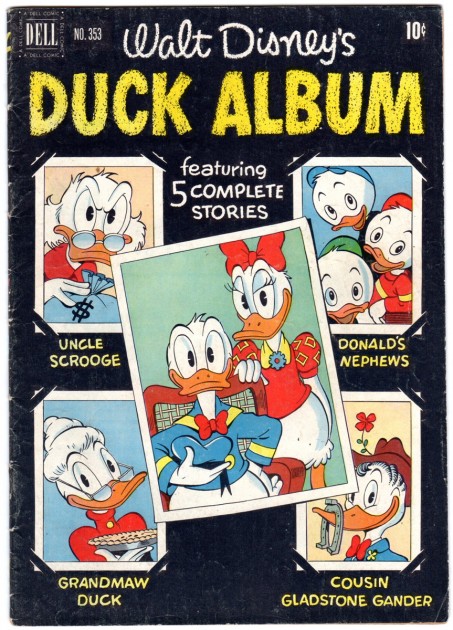
As kids, a Carl Barks Donald Duck comic book story or comic book
cover never, ever disappointed. (True, we didn’t even know Barks’
name at the time, but even friends not into art could tell the
difference between a Barks Duck story and a non Barks piece.)
Disappointment came when there was a Barks comic book cover
and no Barks story inside the comic.
.
Such was the case with the first two issues of Dell’s “Duck Album”,
but the covers are still a treat because here are the eight Ducks
that Carl gave life to for about half a century.
.
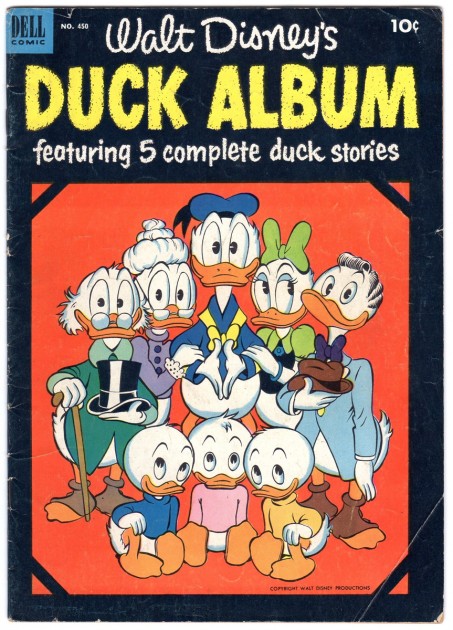
The first cover was published in 1951,
this second issue cover came out in 1952.
.
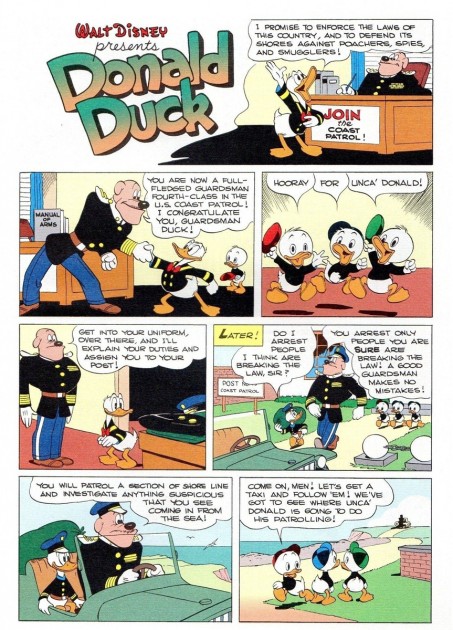 1
1It was wonderful in a Barks Duck story when the story’s location
was one of the key parts of the tale. Carl would pull out all of the
stops and give that locale all the tender, loving care it deserved.
This 10 page Duck story “Donald of the Coast Patrol” is from 1948.
(The story shown here is a Gladstone reprint.)
.
 2
2The story takes place at the seashore and the background scenes
are so beautifully done, (you can smell the salt air) especially this
second page. It’s the introduction to the beach and IMHO one of
the best realized comic book pages ever done.
.
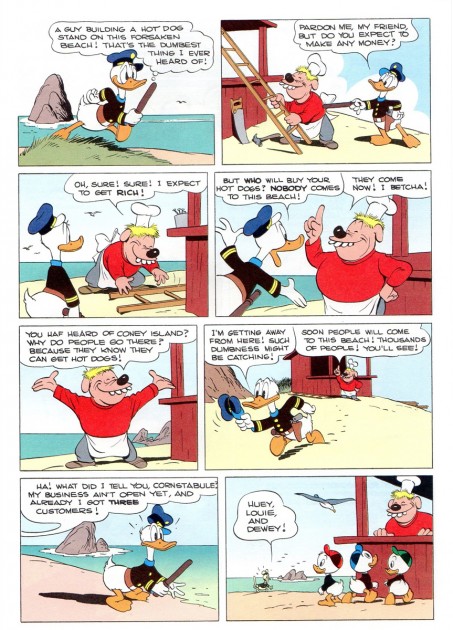 3
3.
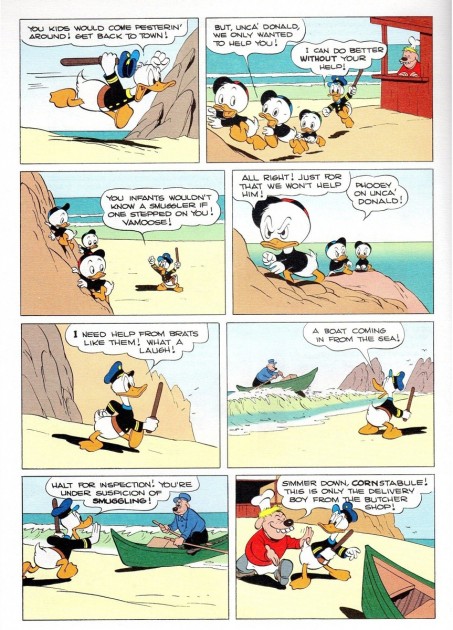 4
4.
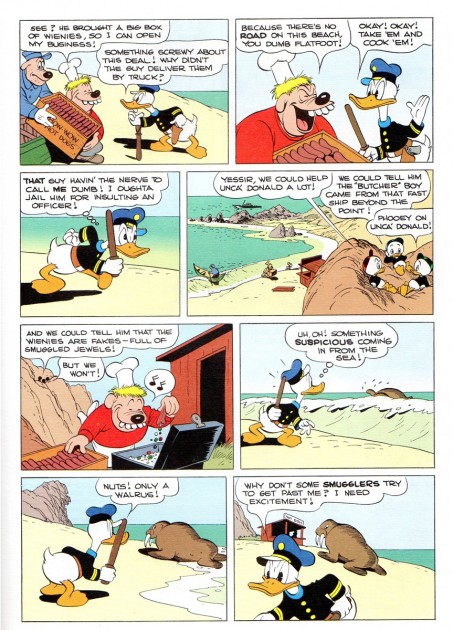 5
5.
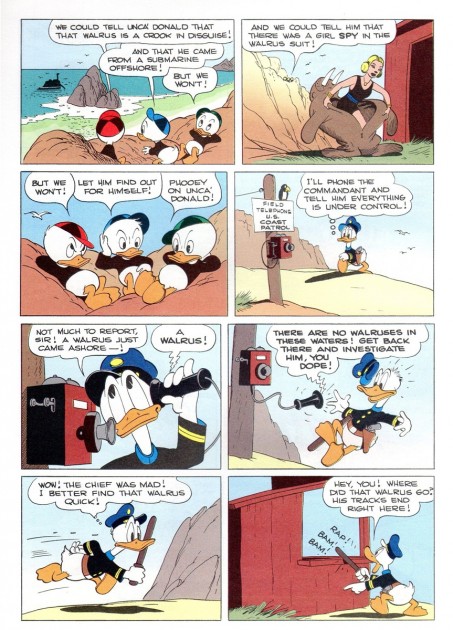 6
6.
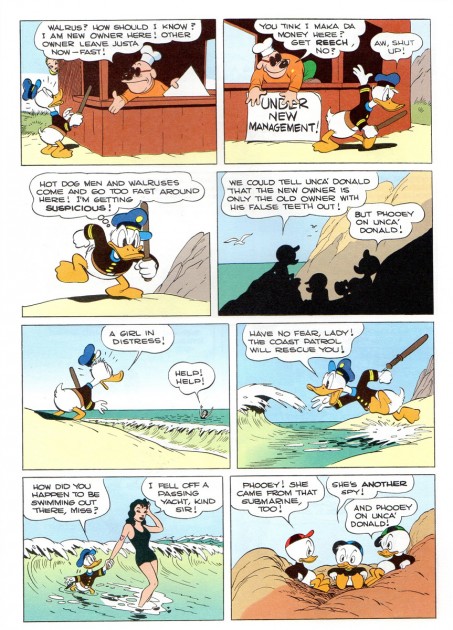 7
7.
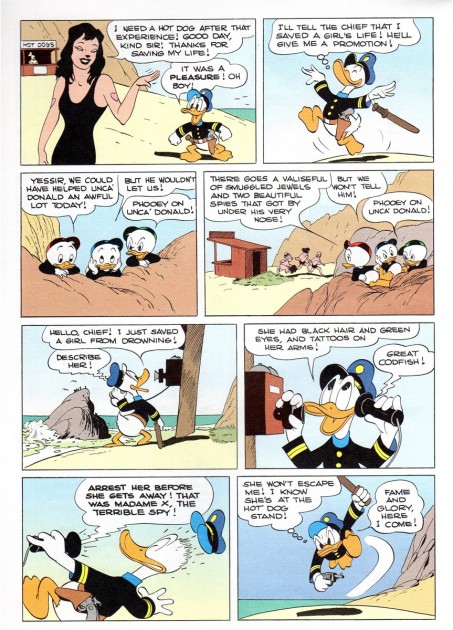 8
8.
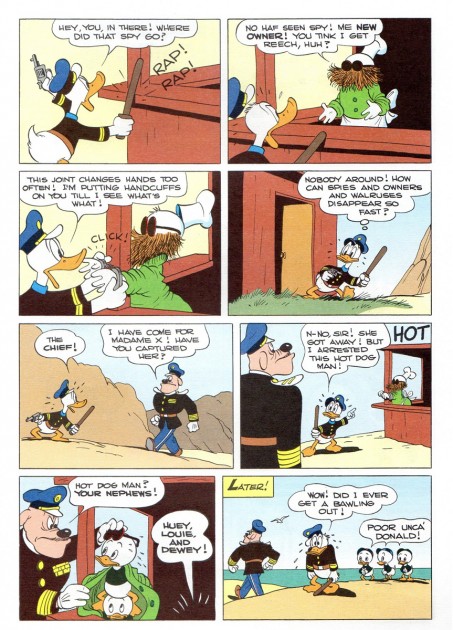 9
9.
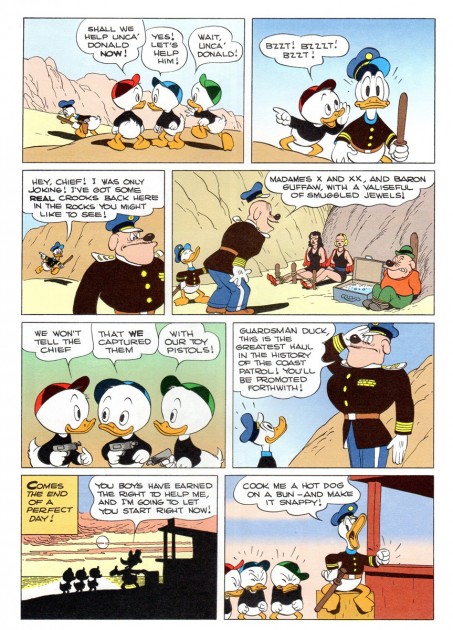 10
10.
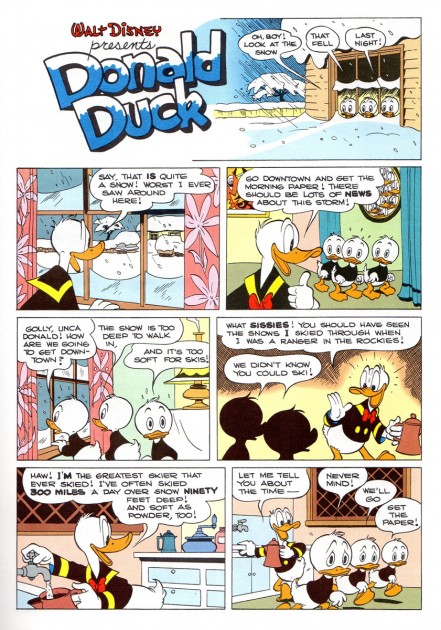 11
11Barks always delighted himself and us annually with his seasonal
winter Donald Duck stories and their beautiful snowy landscapes.
Originally printed in 1950 and reprinted here by Gladstone, in the
“Mission to Codfish Cove” story he masterfully plumbed the
snowy depths and heights to new levels.
(The story also has a madcap Al Capp or Harvey Kurtzman feel to it.)
.
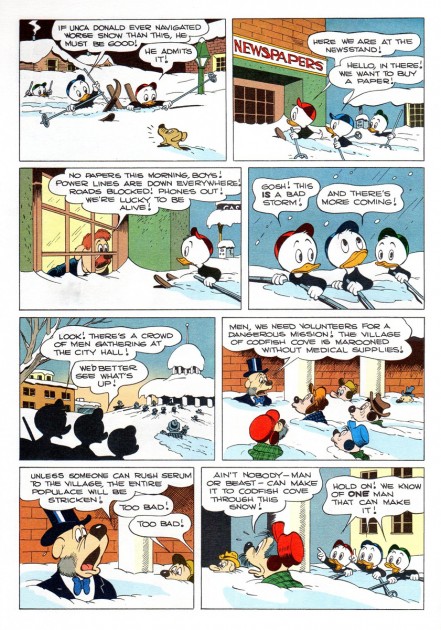 12
12.
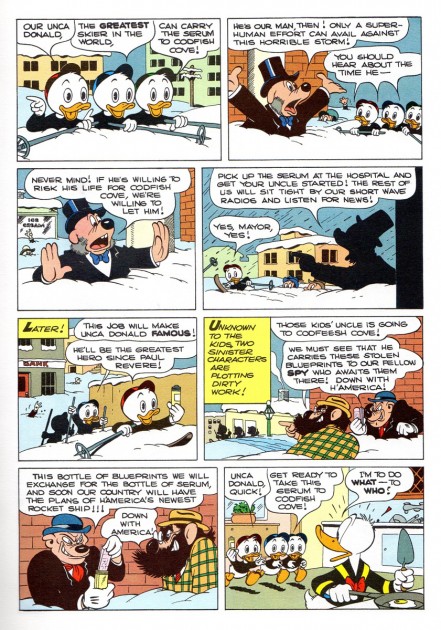 13
13.
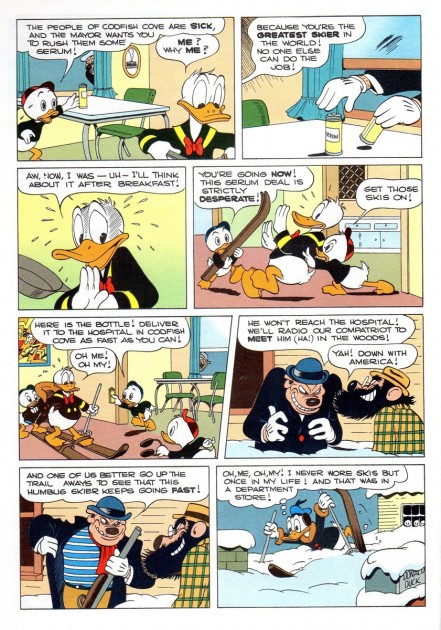 14
14.
 15
15.
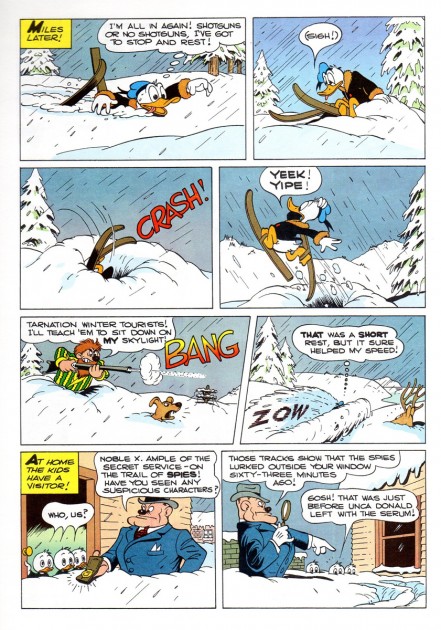 16
16.
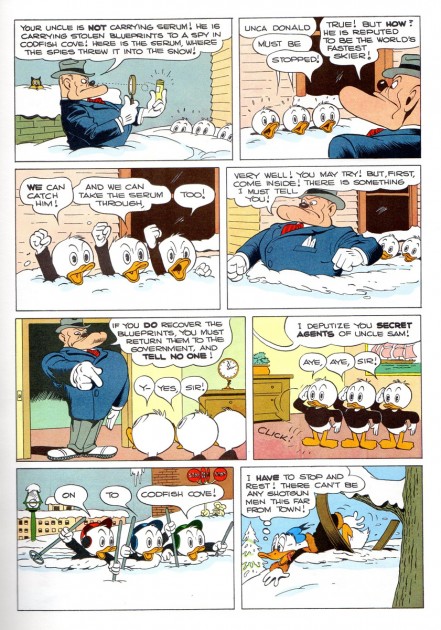 17
17.
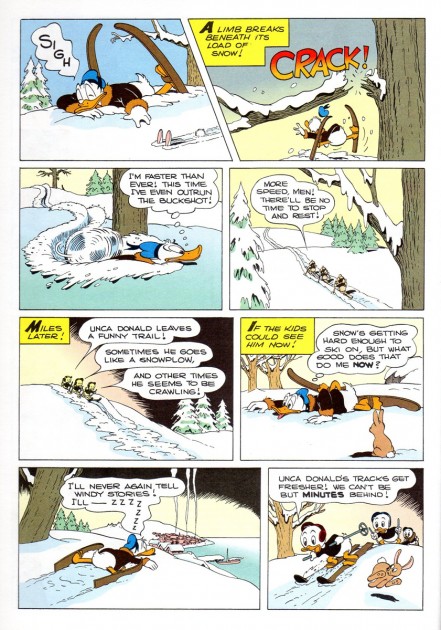 18
18.
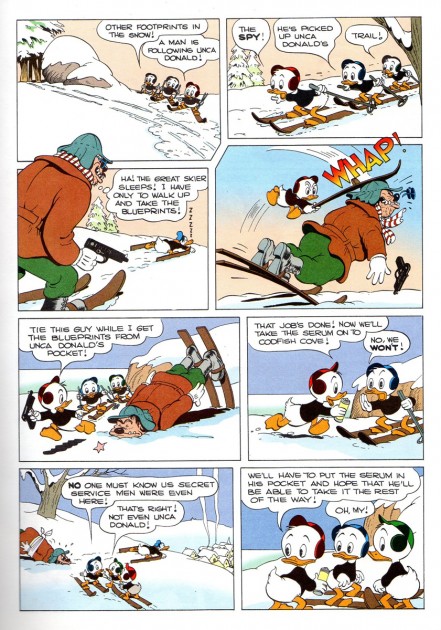 19
19.
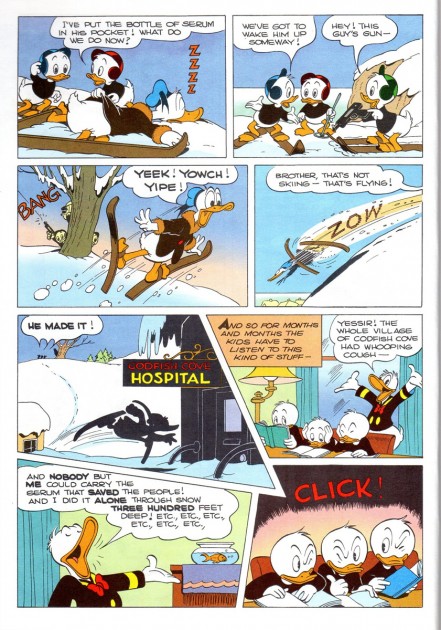 20
20.
Action Analysis &Animation &Animation Artifacts &Disney 30 Nov 2011 06:36 am
Mickey and the Shadows – 1
- Having seen the entirety of Mickey chasing the broom into the adjoining room, we now take up the shadows that show us what Mickey does in there. Again there are many drawings (it’s all on ones) so this is the first part. (See past posts here.)
It’s animated by Riley Thompson with Harvey Toombs assisting. The sequence director was James Algar.
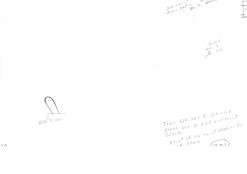 1
1 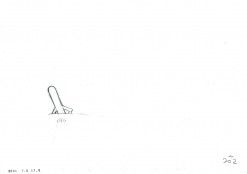 2
2
____________________________
The following QT incorporates all the drawings from this post
All previous posts will be combined in the final piece.
All drawings were exposed per the Exposure Sheets.
Animation Artifacts &Disney &John Canemaker &Peet &repeated posts &Story & Storyboards 28 Nov 2011 07:45 am
Ben and Me Board – repost
 - Bill Peet was one of the prime artists who shaped many of the Disney features. He has been an enormous influence on me and thanks to John Canemaker, who has loaned me the following storyboard, I’m pleased to post some of Mr. Peet’s excellent artwork.
- Bill Peet was one of the prime artists who shaped many of the Disney features. He has been an enormous influence on me and thanks to John Canemaker, who has loaned me the following storyboard, I’m pleased to post some of Mr. Peet’s excellent artwork.
Ben and Me was a 20 min short produced in 1953. It’s an oddity in the Disney canon. The story of a mouse who influences Benjamin Franklin through many of his most famous moments was originally a book by Robert Lawson and was adapted by Bill Peet for the studio.
The photostats of the storyboard, like others I’ve posted, is extremely long. Hence, I’m posting them as large as I possibly can so that you’ll be able to read them once you’ve enlarged the images.
These three panels are followed by a couple more revisions. The revisions I only have as xeroxes – lesser quality.

This image is a recreation of the extraordinary pan as seen in the first row of the storyboard posted above. It’ll enlarge to a size where you can properly see it. A couple of the objects were on secondary overlays creating a minimal multiplane effect.
Bill Peet offered great drawings in his storyboards, and I’m sure he brought a lot of inspiration to the animators.

This is an excedingly long pan (30 inches), and is almost invisible in this minimal thumbnail. Rather than break it up into shorter bits, I’m posting it as is and hope it won’t be too much of a problem for you to follow in its enlarged state. You have to click on it to see it.
The image below is a recreation of this pan from the final film done using multiple frame grabs.
There’s an excellent article about the making of Ben and Me by Wade Sampson at Jim Hill Media. It gives quite a bit of information about this odd short and is well worth reading as a companion to these boards.
Animation &Animation Artifacts &Disney 23 Nov 2011 05:02 am
Mickey and the Brooms – 4
- I should have started with this opening run of the broom which Mickey follows. So, this weeks entry has only a few drawings, but it’s an introduction to the broom that’ll be splinters in a few seconds.
The scene was animated by
Riley Thomson with an assist from Harvey Toombs.
The sequence was directed by Jim Algar.
This is production #2004- Seq. 7 – Scene 53. It runs 28 ft. 3 frs.
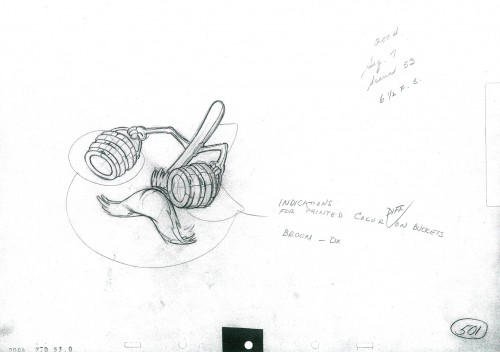 501
501
____________________________
The following QT incorporates all the drawings from this post
as well as the previous posts, Part 1 & Part 2, Part 3.
All drawings were exposed per the Exposure Sheets.
Action Analysis &Animation &Animation Artifacts &Disney 16 Nov 2011 07:14 am
Mickey and the Brooms – 3
- This is the third part of the famous scene from Fantasia wherein Mickey Mouse finally kills off the non-stop broom. He axes it into pieces. This post concludes all the drawings of Mickey; from here on out we have Mickey’s shadow doing the dirty work.
The scene was animated by
Riley Thomson with an assist from Harvey Toombs.
The sequence was directed by Jim Algar.
This is production #2004- Seq. 7 – Scene 53. It runs 28 ft. 3 frs.
 87
87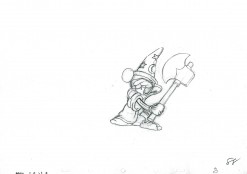 88
88
____________________________
The following QT incorporates all the drawings from this post
as well as the previous posts, Part 1 & Part 2.
All drawings were exposed per the Exposure Sheets.
Animation &Animation Artifacts &Disney 02 Nov 2011 07:54 am
Mickey and the Brooms – 1
- I’ve got a very long scene to share with you, and I’m busy. There are over 500 drawings involved – many are the shadows of Mickey’s chopping of the brooms. So this scene is going to go up in many parts. I also have the exposure sheets (which are complicated) and I’ll post those when I reach a good breaking point.
The scene is beautifully animated by Riley Thompson with assistant animation from Harvey Toombs. Here’s Mickey entering the scene and skidding to a stop outside the door.
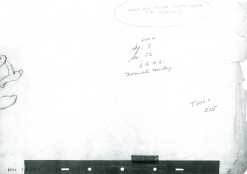 1
1 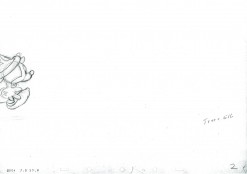 2
2
__________________________
The following QT utilizes all the drawings displayed above.
as exposed on the X-sheets. Most are on ones. Moving
into and out of short holds drawings are on twos.
__________________________
Books &Commentary &Disney 27 Oct 2011 06:18 am
Walt in Wonderland – overdue review
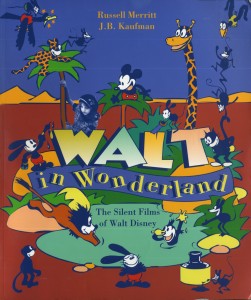 - The book I reread this week was Russell Merritt and J.B.Kaufman‘s Walt in Wonderland. Actually, this was the third time I’d read the book, and I’ve also visited it another half dozen times just for the illustrations. Needless to say, I think this book is a treasure.
- The book I reread this week was Russell Merritt and J.B.Kaufman‘s Walt in Wonderland. Actually, this was the third time I’d read the book, and I’ve also visited it another half dozen times just for the illustrations. Needless to say, I think this book is a treasure.
In the past three weeks, I’ve read three versions of the same material in different forms. Timothy S. Susanin’s Walt Before Mickey: Disney’s Early Years, 1919-1928 led me to reread Donald Crafton ‘s Before Mickey and that led me to reread today’s book. They all come with different pleasures. Though the material was the same, in no way did I feel as though it was repetitious. All three writers have different approaches, and all three kept it lively for me.
Crafton’s Before Mickey tells the story most expeditiously. There’s a lot in this book, and the Walt Disney story is just a part of it. Susanin’s Walt Before Mickey reveals a very large gathering of data, much of which is really unnecessary to the story, but just the same was a delight to me. Merritt & Kaufman’s Walt in Wonderland expands on Crafton and holds back on extraneous material. However the book is overrun with enormously valuable visuals. Scripts, story pages, animation drawings, posters and pictures fill the space around the story of Walt Disney’s rise from nowhere through the creation of Mickey Mouse.
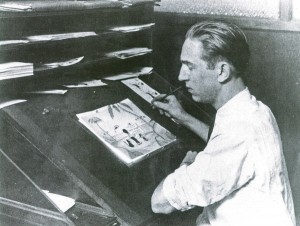 The authors take the time to reveal some of their methods of evaluating the material. For example, not all of the silent films exist today, so they create a complete filmography from archival texts they found. Copyright forms required synopses of the stories as well as credits for the films. This enables the authors to detail the material for us when they weren’t able to actually see the films. Prior to this book, we knew that Virginia Davis, Dawn O’Day and Margie Gay all played Alice in the Alice Comedies. However, Kaufman and Merritt were also able to identify a fourth Alice as Lois Hardwick, and they also calculate why the change. This is scholarship, well done.
The authors take the time to reveal some of their methods of evaluating the material. For example, not all of the silent films exist today, so they create a complete filmography from archival texts they found. Copyright forms required synopses of the stories as well as credits for the films. This enables the authors to detail the material for us when they weren’t able to actually see the films. Prior to this book, we knew that Virginia Davis, Dawn O’Day and Margie Gay all played Alice in the Alice Comedies. However, Kaufman and Merritt were also able to identify a fourth Alice as Lois Hardwick, and they also calculate why the change. This is scholarship, well done.
Though I’ve read this book several times already, I still call this series “Alice in Cartoonland.” In fact, many people do, yet the authors point out that it was never the title of the films. They were simply called the “Alice Comedies.”
I was not much of a fan of this animation series; actually, I was not a big fan of the Disney silent films. They pale in comparison to the Felix cartoons of the same period – in fact, almost everything does (of course with the exception of the McCay films.) The Disney silent films have a lot of energy, but a farmyard sense of humor that never seemed very funny to me.
 I’ve sat through numerous theatrical screenings of silent shorts (and fallen asleep in many of them). One, however, stands out memorably. There was a MoMA show which was a compilation of shorts from different studios. An organ soundtrack was attached to many of the shorts, but several were truly silent. (It’s interesting to attend an audience who doesn’t know if talking is allowed when the film is dead silent.) The program soon grew tiresome and dragged on. The last film screened was Disney’s “Steamboat Willie,” the first successful animated short with synchronized sound. Let me tell you, it was made perfectly clear how monumental this film was, and why it was so successful. That sound track was a godsend after 90 minutes of silent dross.
I’ve sat through numerous theatrical screenings of silent shorts (and fallen asleep in many of them). One, however, stands out memorably. There was a MoMA show which was a compilation of shorts from different studios. An organ soundtrack was attached to many of the shorts, but several were truly silent. (It’s interesting to attend an audience who doesn’t know if talking is allowed when the film is dead silent.) The program soon grew tiresome and dragged on. The last film screened was Disney’s “Steamboat Willie,” the first successful animated short with synchronized sound. Let me tell you, it was made perfectly clear how monumental this film was, and why it was so successful. That sound track was a godsend after 90 minutes of silent dross.
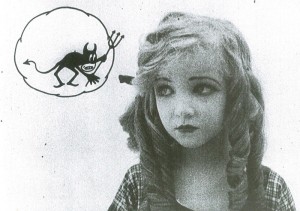 There is one telling sentence at the beginning of this book. “. . . the first striking fact about Disney’s 1920s films is that they take no particular direction: they don’t evolve, they accumulate.” The authors point out that knowing the films of the 30s Disney, one would expect that the work in the 20s would, likewise, be a developing road-map to the future; constant growth in the animation and production techniques. Yet, it isn’t until Mickey that we start seeing enormous growth. “Plane Crazy,” the first Mickey (still a silent film), is when we get the first truck in (Iwerks came up with this effect, created by placing books under the zooming background as it got closer to the lens of the stationary camera.) Perhaps it took the trauma of creating that first Mickey Mouse cartoon for Disney and crew to wake up to innovation. And perhaps realizing how powerful that innovation was to the animated film – the success of the first sound film, then the first color film – that Disney realized the importance of constant change and growth.
There is one telling sentence at the beginning of this book. “. . . the first striking fact about Disney’s 1920s films is that they take no particular direction: they don’t evolve, they accumulate.” The authors point out that knowing the films of the 30s Disney, one would expect that the work in the 20s would, likewise, be a developing road-map to the future; constant growth in the animation and production techniques. Yet, it isn’t until Mickey that we start seeing enormous growth. “Plane Crazy,” the first Mickey (still a silent film), is when we get the first truck in (Iwerks came up with this effect, created by placing books under the zooming background as it got closer to the lens of the stationary camera.) Perhaps it took the trauma of creating that first Mickey Mouse cartoon for Disney and crew to wake up to innovation. And perhaps realizing how powerful that innovation was to the animated film – the success of the first sound film, then the first color film – that Disney realized the importance of constant change and growth.
Whatever the reason, things changed with the coming of sound.
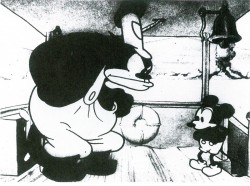 Walt in Wonderland is a key book that synthesizes this entire period in the evolution of Disney animation. It’s a little-known beginning, and the book not only details the making of all the films but gives a clear and good summary of the series that were done. You see the long shot as well as the close up, and you have no doubt as to the true history of the material.
Walt in Wonderland is a key book that synthesizes this entire period in the evolution of Disney animation. It’s a little-known beginning, and the book not only details the making of all the films but gives a clear and good summary of the series that were done. You see the long shot as well as the close up, and you have no doubt as to the true history of the material.
The authors obviously did enormous research, yet the look of the book, filled with new and different visuals, is anything but scholarly. As a matter of fact, there are times when the images almost create a distraction from the writing. A tough problem for an animation book to have.
All I can say is that if you have any interest in the early Disney, the young and vibrant Disney, I’d suggest you get a copy of this book. It’s a gem.

Here’s a drawing I have from Plane Crazy.
Click the image to see the whole drawing.
Bill Peckmann &Comic Art &Disney 30 Sep 2011 06:50 am
Jesse Marsh comic art
Jesse Marsh was a comic artist who, principally, is known for his work on ‘Tarzan’, the comic series published by Dell. He was a self-taught artist who started working for the Disney studio in 1939. He worked on Fantasia and Pinocchio in the story department. He served in the Army as a radar specialist and was wounded with a mortar shell. After the War and a long recuperation, he returned to Disney but also worked freelance at Western Publishing. He left Disney in 1947 to work at Western, where he took charge of the TARZAN series of comic books.
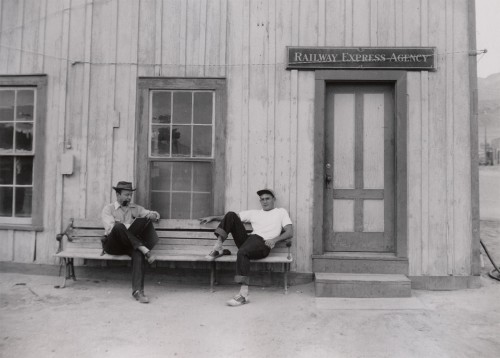
Jesse Marsh (L) and Tom Oreb (R) in the early 1940s
borrowed from Dan Nadel, posted Monday, March 29, 2010
.
Bill Peckmann sent some scans of various art by Jesse Marsh and I’m pleased to post them here. Many thanks to Bill. He writes:
-
“Before gaining success as DELL Comics’ TARZAN artist in the late 40′s and 50′s, Jesse Marsh, early in his career, worked for Disney in animation. The following material is some rarely published from that time period, They are taken from Charles Solomon’s 1995 book, The Disney That Never Was.”
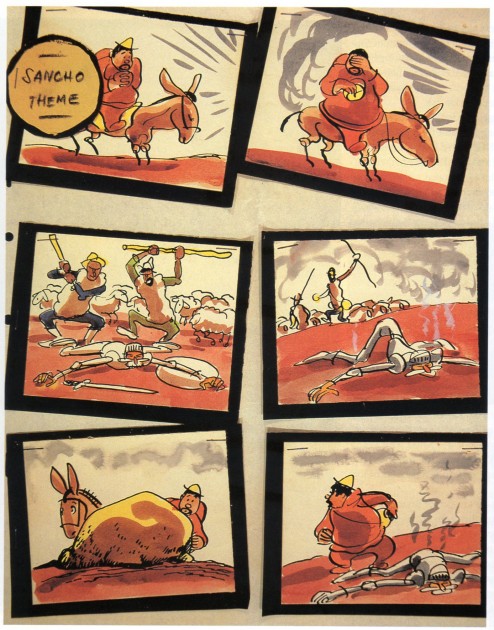
The following is the accompanying article by Solomon about Marsh’s artwork:
- In 1946, a second crew, under Jesse Marsh, returned to “Don Quixote.” This version would have been set to an adaptation of Richard Strauss’s tone poem Don Quixote: Fantastic Variations on a Theme of Knightly Character far Large Qrchestra, op. 35. Marsh prepared hundreds of neat pen-and-ink and watercolor cartoons, noting the musical themes that would accompany the action. He did enough rough storyboards for an entire film, beginning with a shot of the book resting on a table I flanked by suits of armor, and concluding with a sort of apotheosis: After Don Quixote’s death, he, Dulcinea, and Sancho Panza would ride through the clouds to a glittering castle beneath a rainbow. Like the earlier version, this incarnation of “Don Quixote” was apparently shelved before story meetings were held or dialogue prepared.
.
Preproduction work began for the third time in April 1951. This crew used an even simpler style that reflects the influence of such New Yorker cartoonists as Sol Steinberg and Otto Soglow; The rounded characters consist of little more than a few ink lines with monochromatic highlights in dull green or tan. Work on the film must have ended soon after it began, as only a few dozen drawings were completed.
The following is from the Disney True-Life Adventure comic book, 1957.
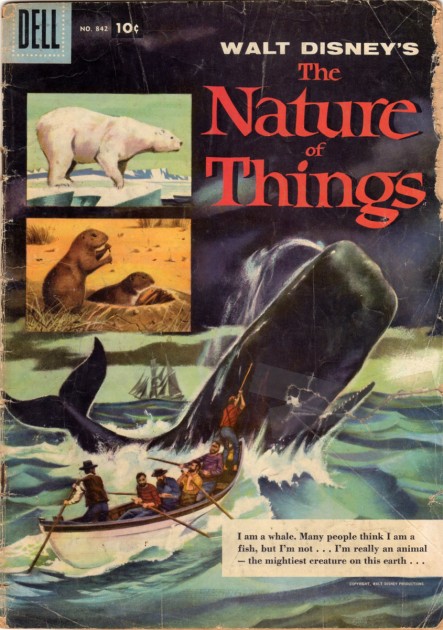
Jesse did not do the cover of this 1957 comic,
but he did do all of the 3 inside stories.
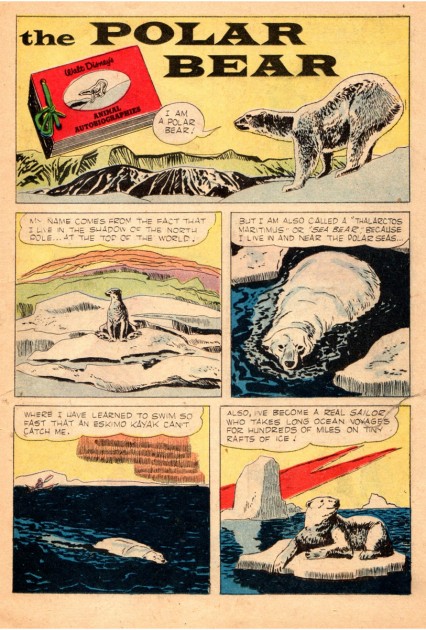 10
10
This is the first of the three stories in this book.
 11
11
Combine Marsh’s “non slick” style with his beautiful panel and
page layout designs, and you got some impressive results.
A site called The Jesse Marsh Site offers the complete Dell TARZAN no. 1, from January 1948. This was actually the third TARZAN that Dell published.
Animation Artifacts &Disney &Story & Storyboards 26 Sep 2011 06:47 am
Cockaboody Board – recap
- On October 10th the Motion Picture Academy will present a program of films by John & Faith Hubley. John Canemaker and Emily Hubley have assembled the program and although it is composed mostly of films by John (I’m not sure he would have been happy about that), there will be a lot of his early films like Flathatting (for the Navy) and The Magic Fluke and Rooty Toot Toot (for UPA.) There will also be recently restored prints of Adventures of an * and Tender Game as well as the late film, Voyage To Next. The show will have plenty of surprises of very rarely seen and hard-to-find material.
To reserve a seat go to Oscars.org. Academy members – $3.00. General Public – $5.00. or you can pay by mail with a form you’d get on line. Don’t wait; it’s probably sold out by now.
I will be posting as much of the Hubley art as I can in celebration of this show. To start with here’s the storyboard for Cockaboody.
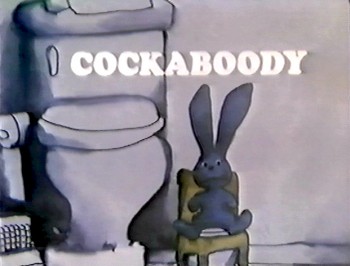 – I have a photostat copy of the storyboard to John and Faith Hubley‘s short film, Cockaboody. So I thought I’d post it to give a good demo of a storyboard from a master. The board was done in 1973.
– I have a photostat copy of the storyboard to John and Faith Hubley‘s short film, Cockaboody. So I thought I’d post it to give a good demo of a storyboard from a master. The board was done in 1973.
I had worked at Hubley’s for four months on Letterman and was layed off when that work ran out. They started preliminary work on Cockaboody while I was working on the feature Tubby The Tuba.
I left that project in time to get back to see the final scenes of Cockaboody colored, and I did a little animation of a rocking chair, with the two girls cradling it, at the film’s end. I didn’t do enough work on the film to receive credit, but I can still see my pencil lines on those two girls at the end of the film.
The film tells the story of two girls playing in a room next door to their babysitter. They laugh they cry they laugh they cry.
The audio track was improvised by Emily and Georgia Hubley in a recording studio years before they started the film. From the edited tracks a story was culled, and a storyboard formed. John did all of the drawings in storyboarding it.
There are 17 pages of board in all. I’ve inserted frame grabs so you can see how the final turned out. Tissa David animated the entire film.
The storyboard, with all of the drawings done by John, was developed in conjunction with the Hubley’s class at Yale. The students actively discussed the board and offered their participation in the growth of the film’s origin. A documentary was also produced showing the production of the animated short.
You’ll notice that the action in the film varies from the setups in the storyboard. This undoubted had to do with Tissa’s involvement. She would often rework things with John and alter the filmmaking. John, and most of the directors Tissa works with, was open to this. She has a masterful sense of camera placement and uses it throughout this film.
The film was an outgrowth of an early recording John and Faith made of their two daughters, Emily and Georgia. While teaching at Yale the Hubleys worked with the students in their class to help develop this storyboard. One of the students, Kate Wodell, came to work in the studio and was a mainstay there for many years and continued for a while helping Faith on many of her shorts after John died.

__
__
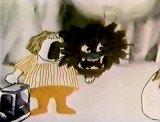 _
_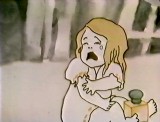 _
_
__
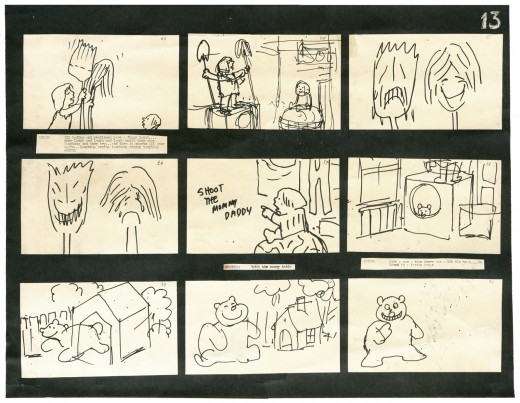
__
__
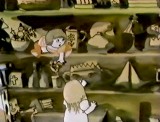 _
_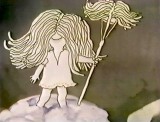 _
_
_
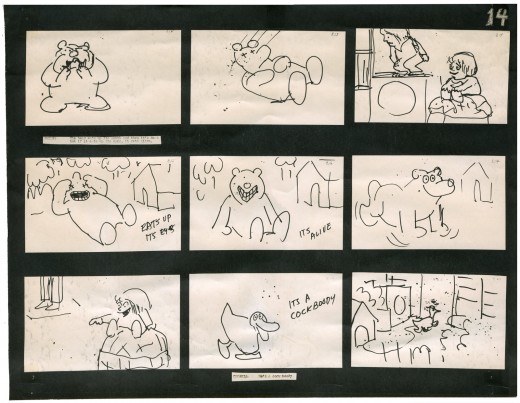
__
__
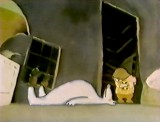 _
_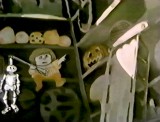 _
_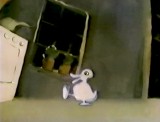
__

__
__
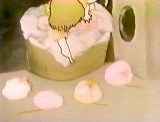 _
_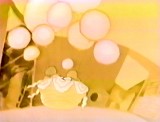 _
_
__

__
__
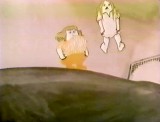 _
_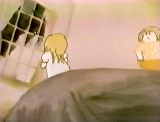 _
_
__

__
__
 _
_ _
_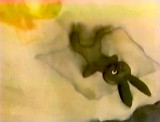
Bill Peckmann &Comic Art &Disney 15 Sep 2011 06:55 am
Luck of the North – Part 3
- We’ve come to the end of the posting of the great Carl Barks story, Luck of the North. Bill Peckmann, has been so kind as to send these scans on to us to post. We’ll finish with the newly recolored version of the story complete with airbrushed backgrounds. However, because of the complaints about this version – particularly in regard to the airbrushed backgrounds – we’re showing some of the other versions of the first of the pages in this section. We’ll start with these originals.
Let’s start with the cover. First, I’ll repost the background I’ve shown in the past. Following this is the newer version done for the Gladstone Giant reprint.
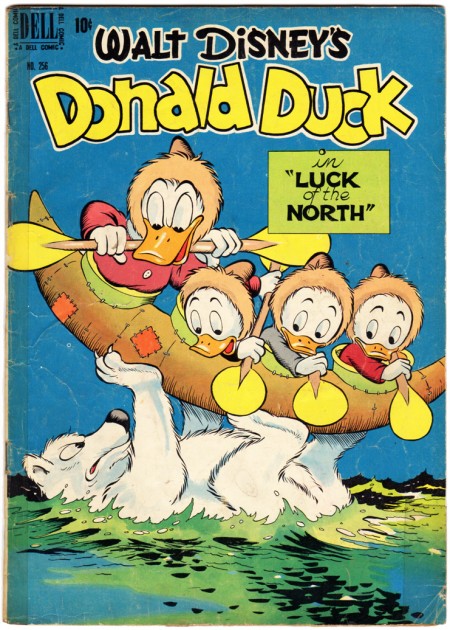
The original comic cover.
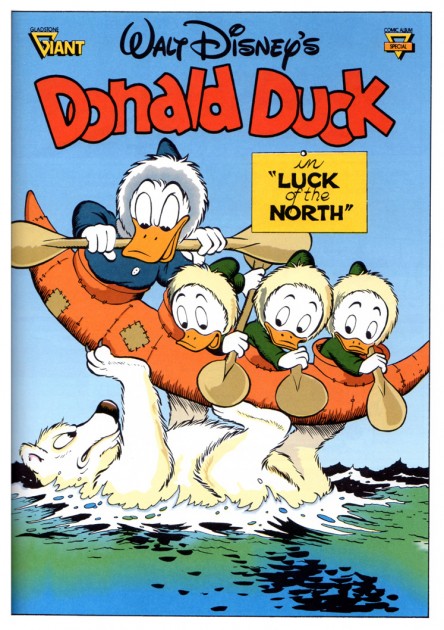
Bill Peckman wrote: This is the cover of the Gladstone Giant reprint, Nicely done.

B.P. wrote: With the Part 1 commentary about
original color printing vs. reprint color vs. a black and white print job,
I figured we could open with the first page of Part 3 shown in three versions.
Here’s the B&W page.
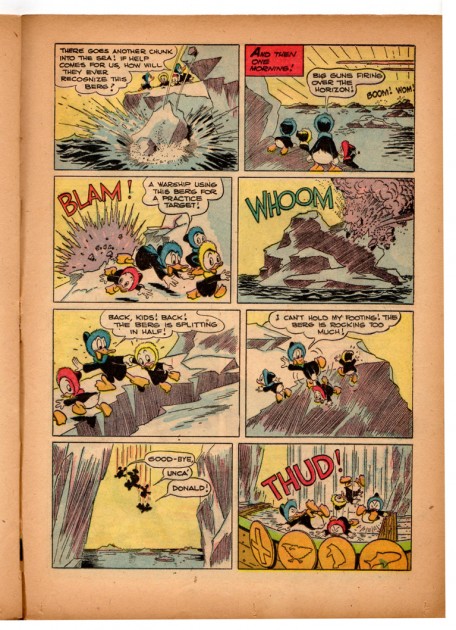
This is the original comic book.
 23
23
This is the Gladstone Giant reprinted page
followed by the remainder of the story.
B.P. writes: One of the best reasons for getting the Gladstone reprints was the excellent and knowledgeable running editorial commentary by Geoffrey Blum in each Barks issue.
Only right that it should be included here.
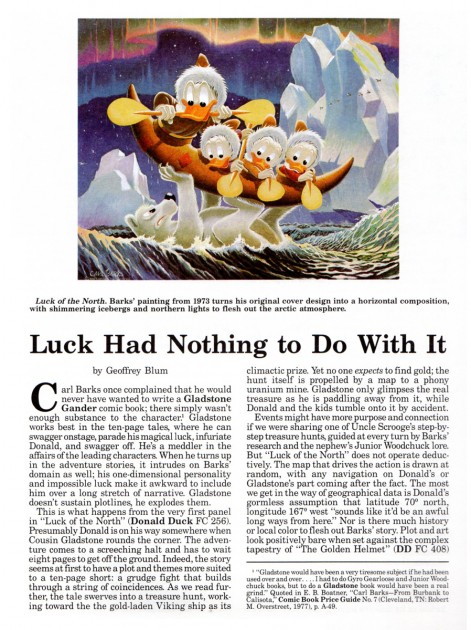 1
1
B.P. writes: Here are the endpaper and back cover gags from the original comic book.
(Sorry about my blue rubber stamping but even as kids we knew that these books were pure golden treasure!)
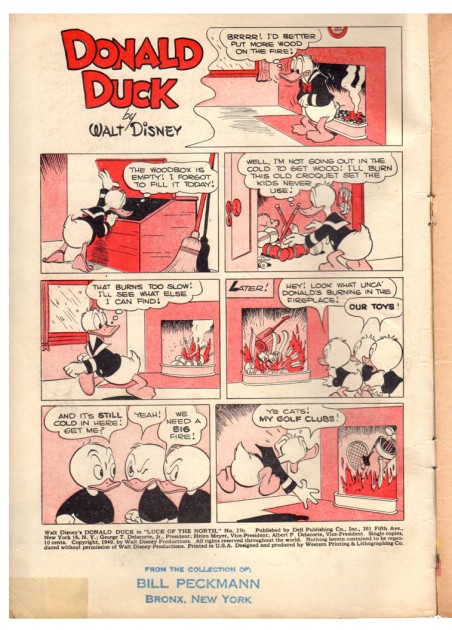 1
1
You can find the first two parts here: Part 1 & Part 2.
